We’re invited for breakfast. As we walk up to the door, Karin Donck greets us with a welcoming smile. She and her husband Xavier Donck live in Deinze, a modest town just outside of Ghent in Belgium. Their impressive home is surrounded by nature and it feels like a well-curated selection of their combined passions: design, art and architecture. Artwork covers many of the surfaces – even in the bathroom – creating a uniquely inspiring atmosphere. And still, the house never feels like an art gallery, but offers genuine warmth.
With an exceptional eye for detail, Karin masters the art of transforming an unassuming piece of furniture into a stunning decorative feature. Xavier is a classic and intelligent family loving man who comes across as initially reserved yet also witty and gentle. It did not take long however, for us to get into healthy discussion about his professional field of architecture and his dream projects while discovering his fantastic sense of humor.
This portrait is part of a series with Vitra. Visit Vitra Magazine to find our more about Karin and Xavier’s design pieces and other individual interior concepts.
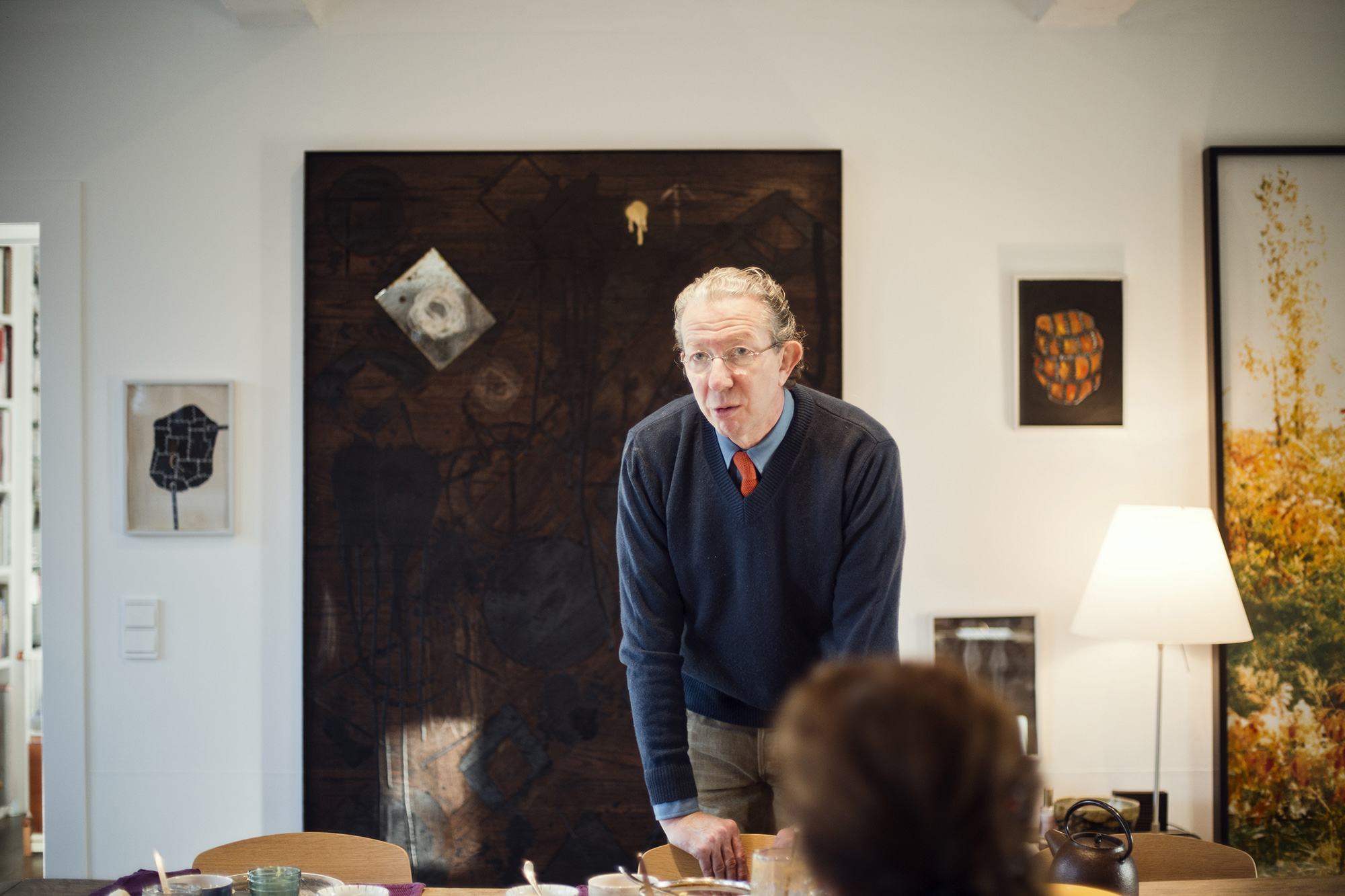
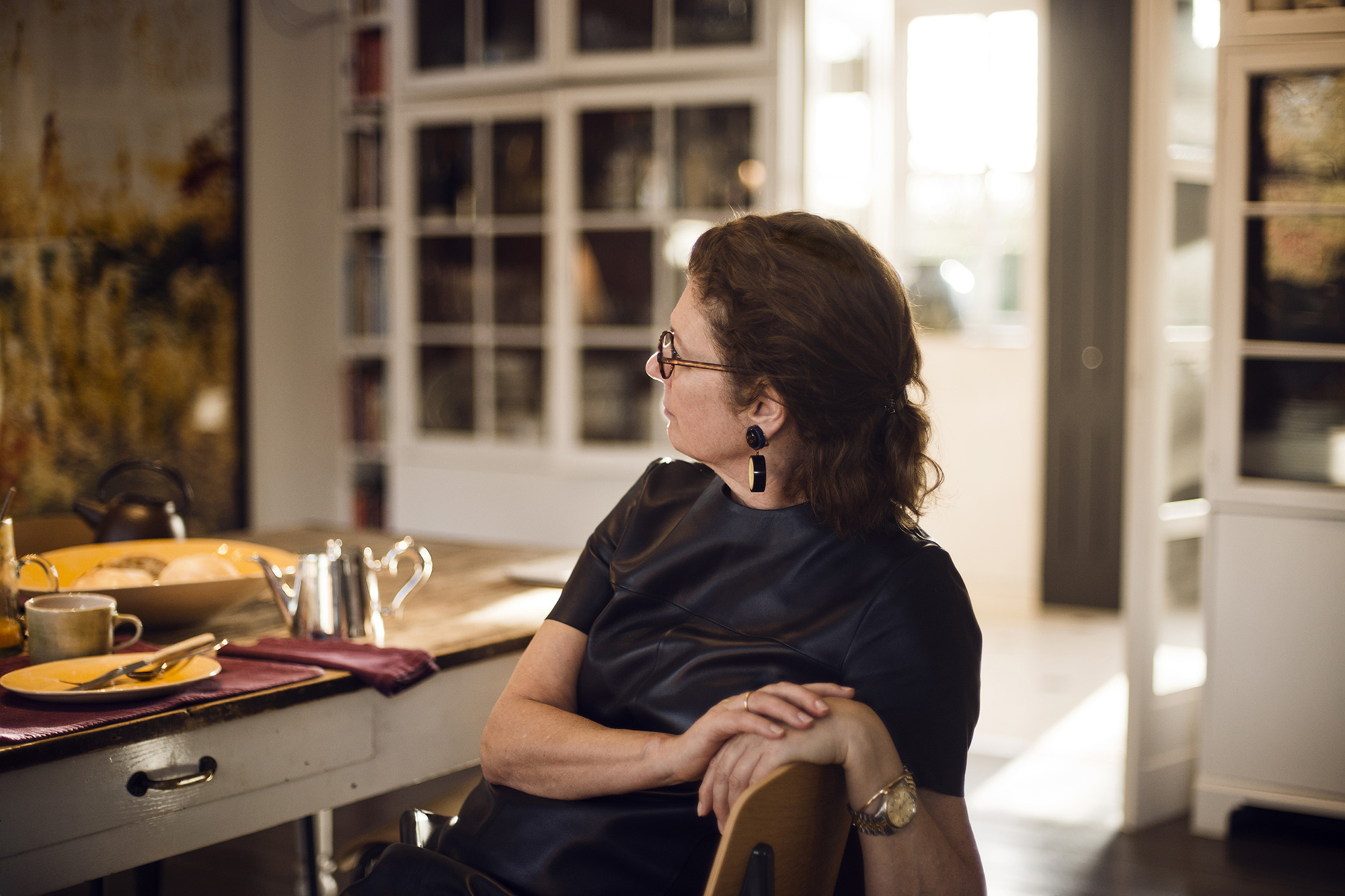
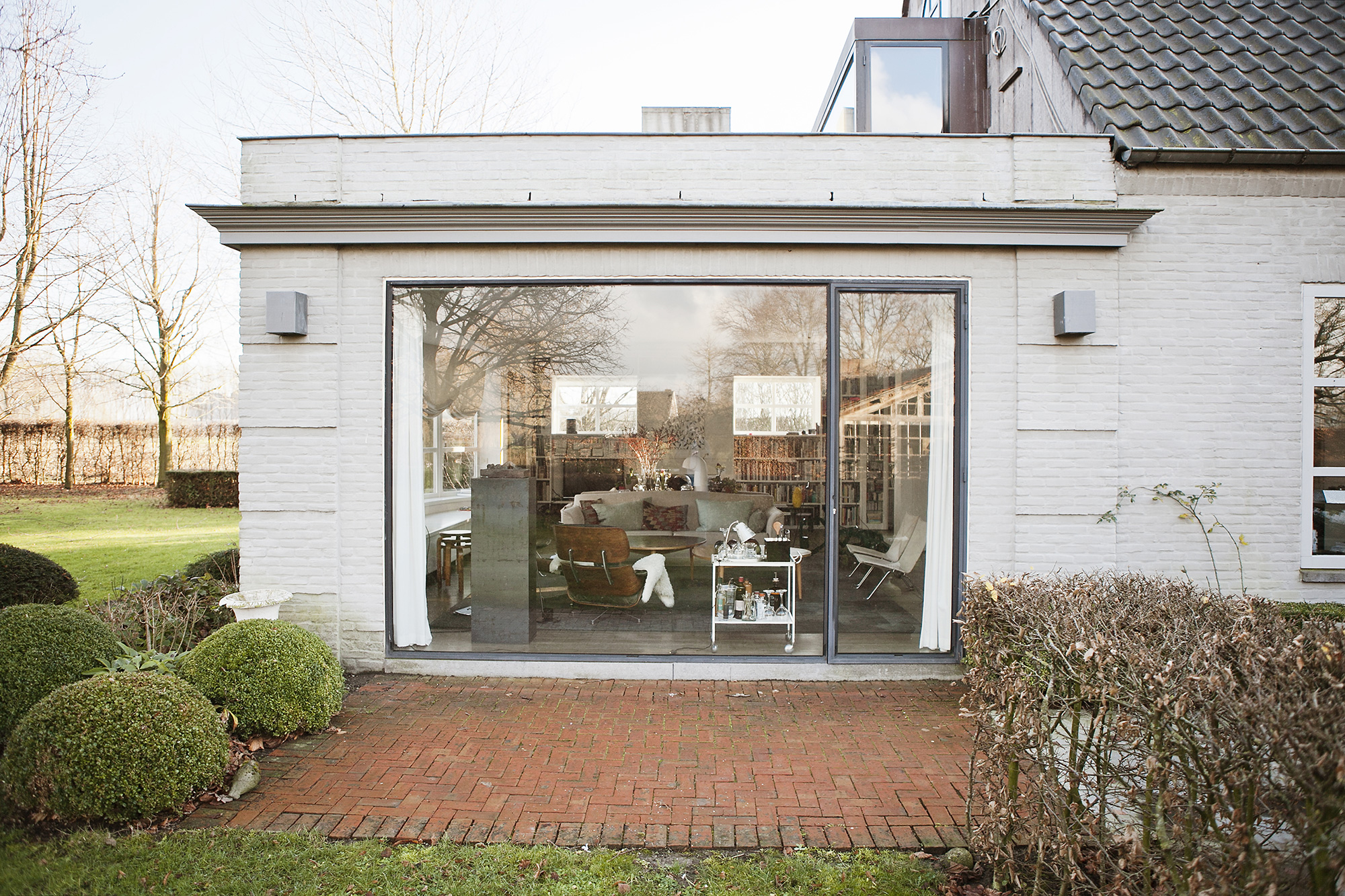
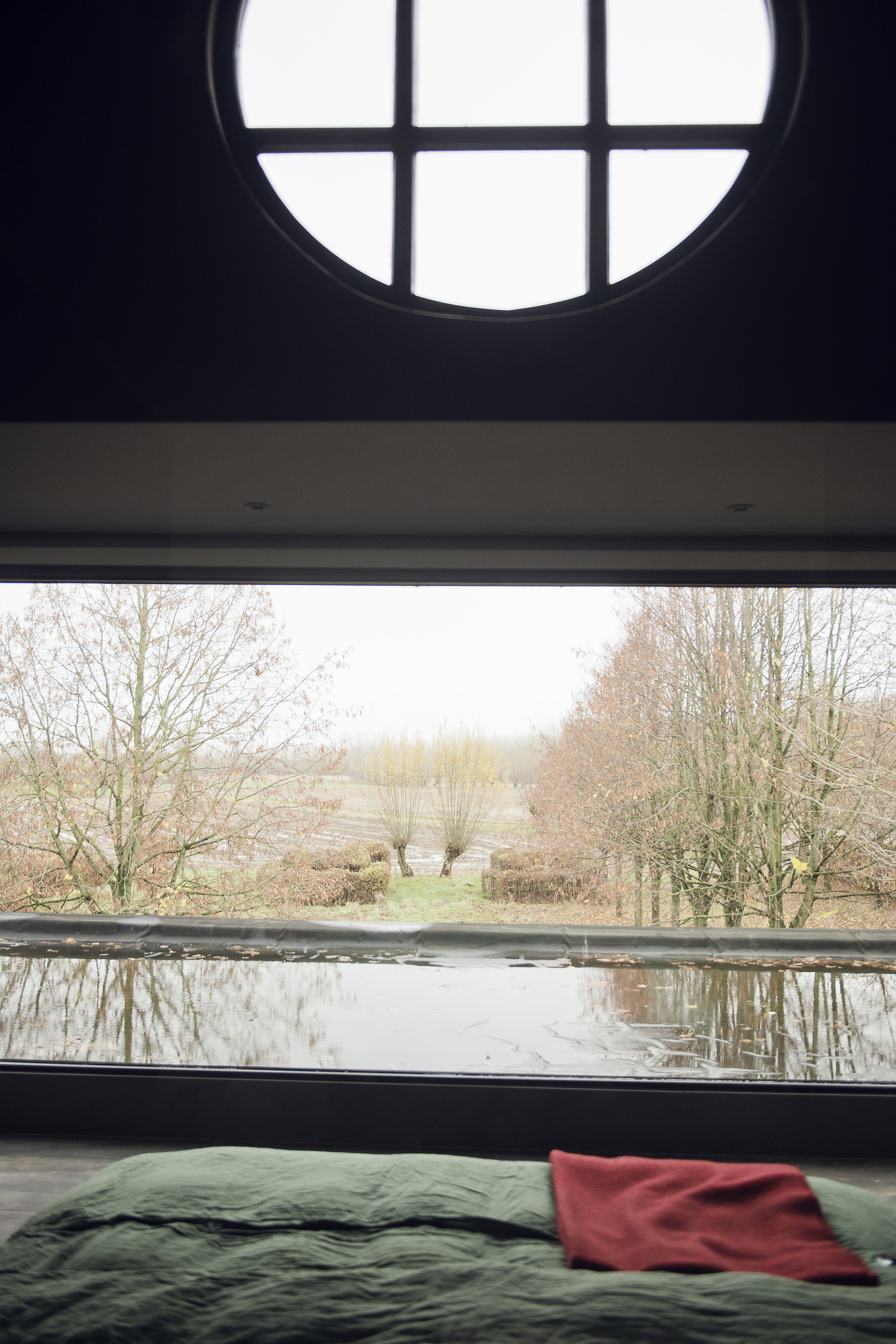
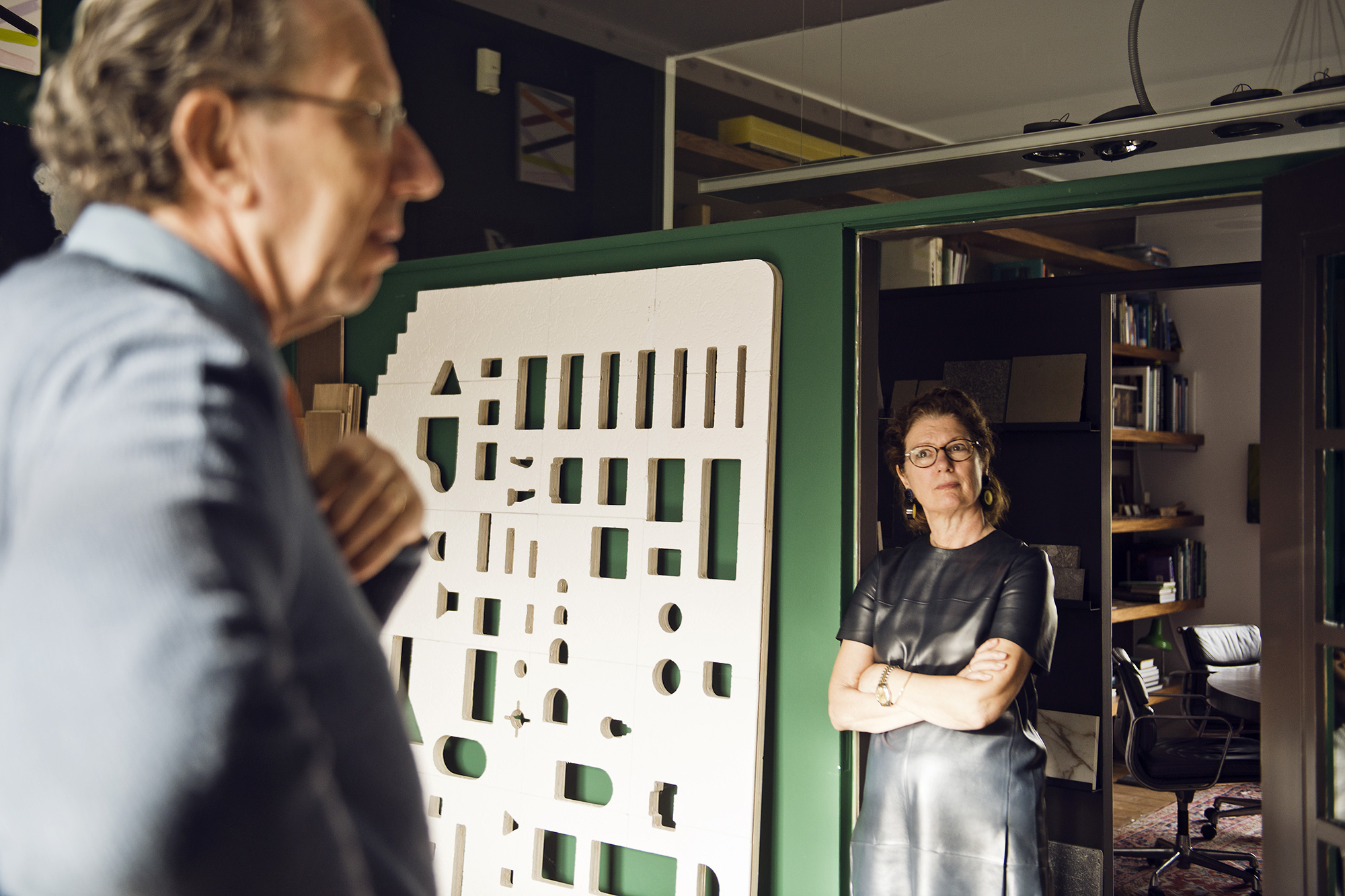
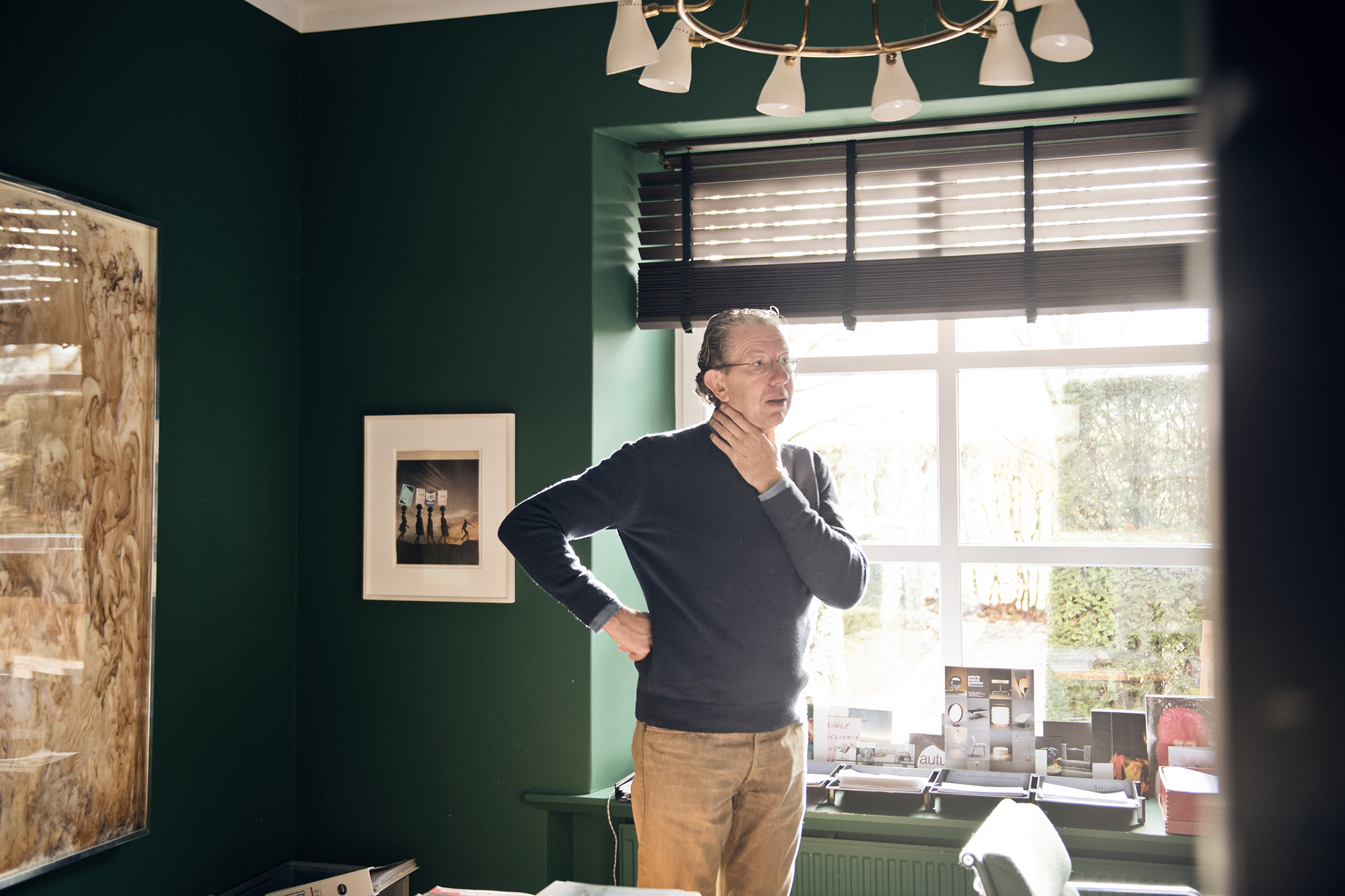
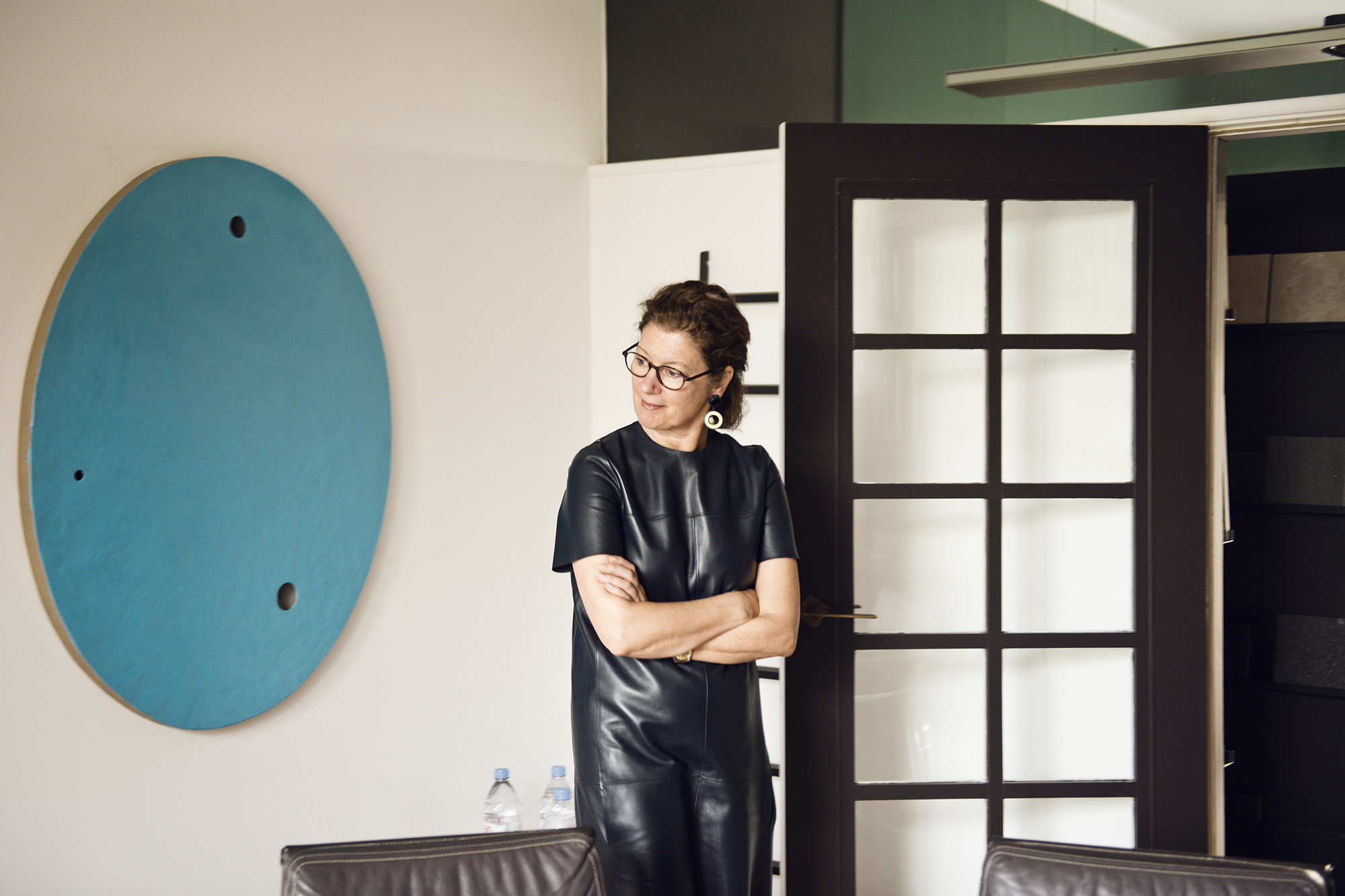
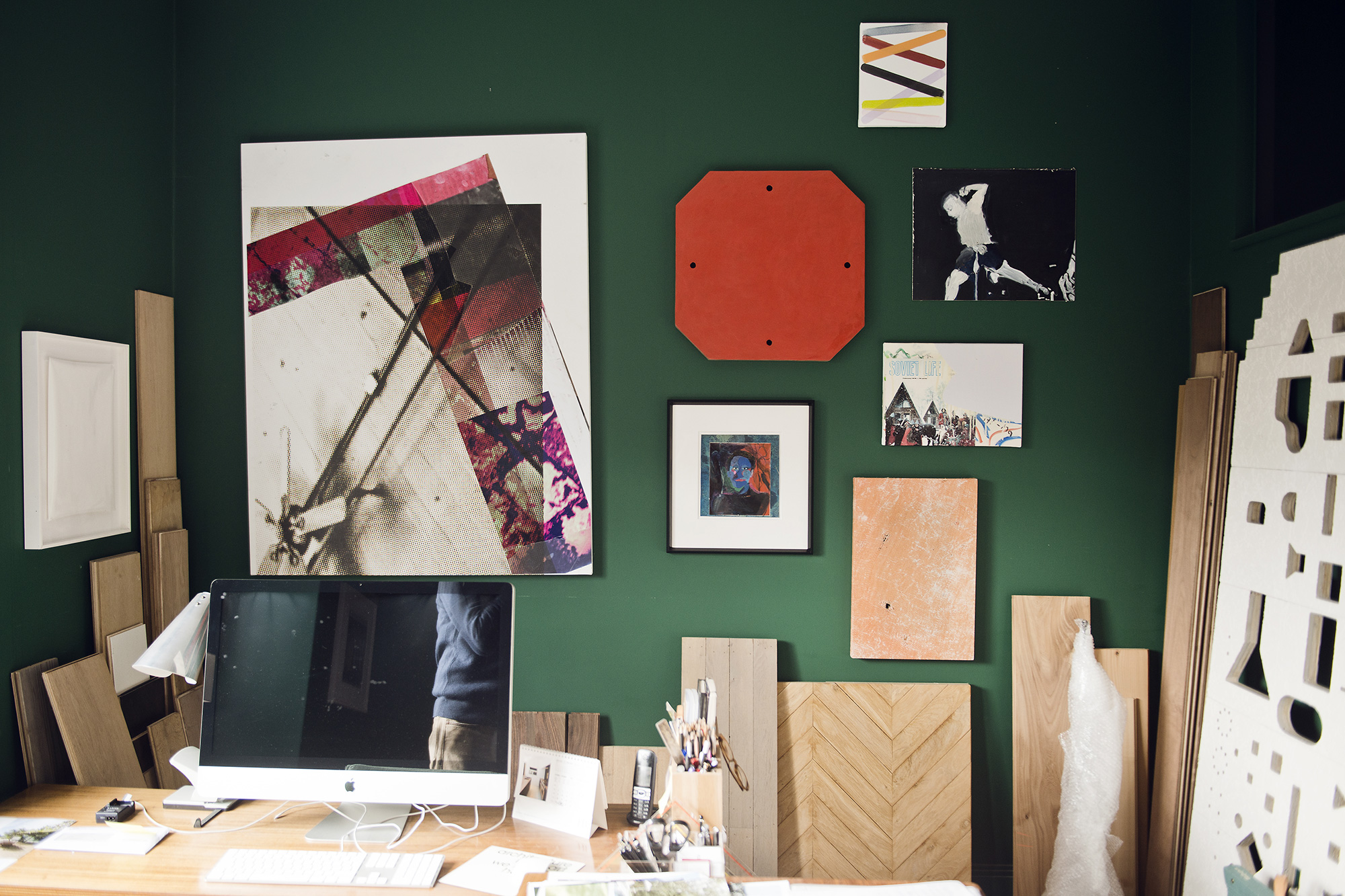
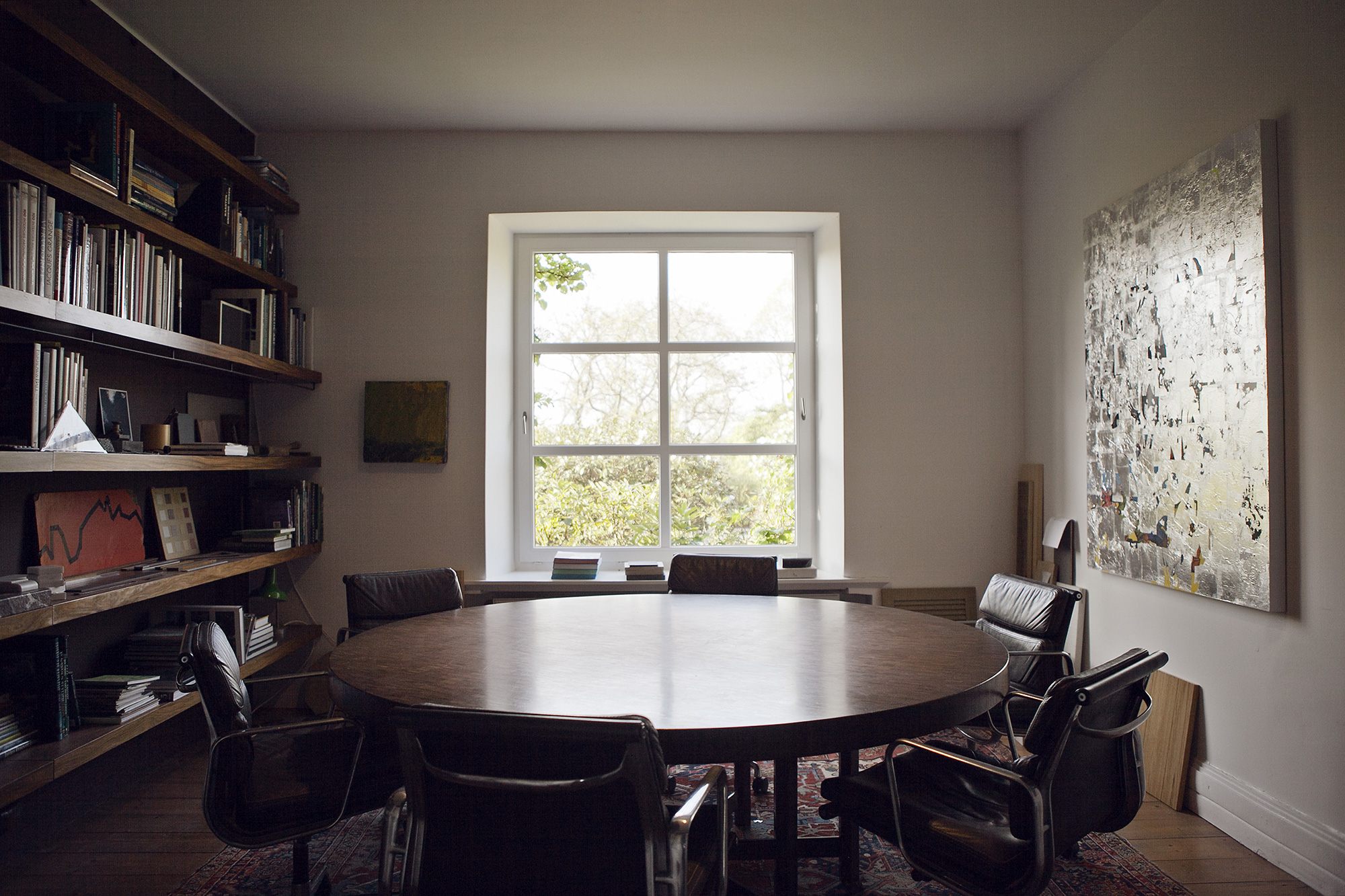
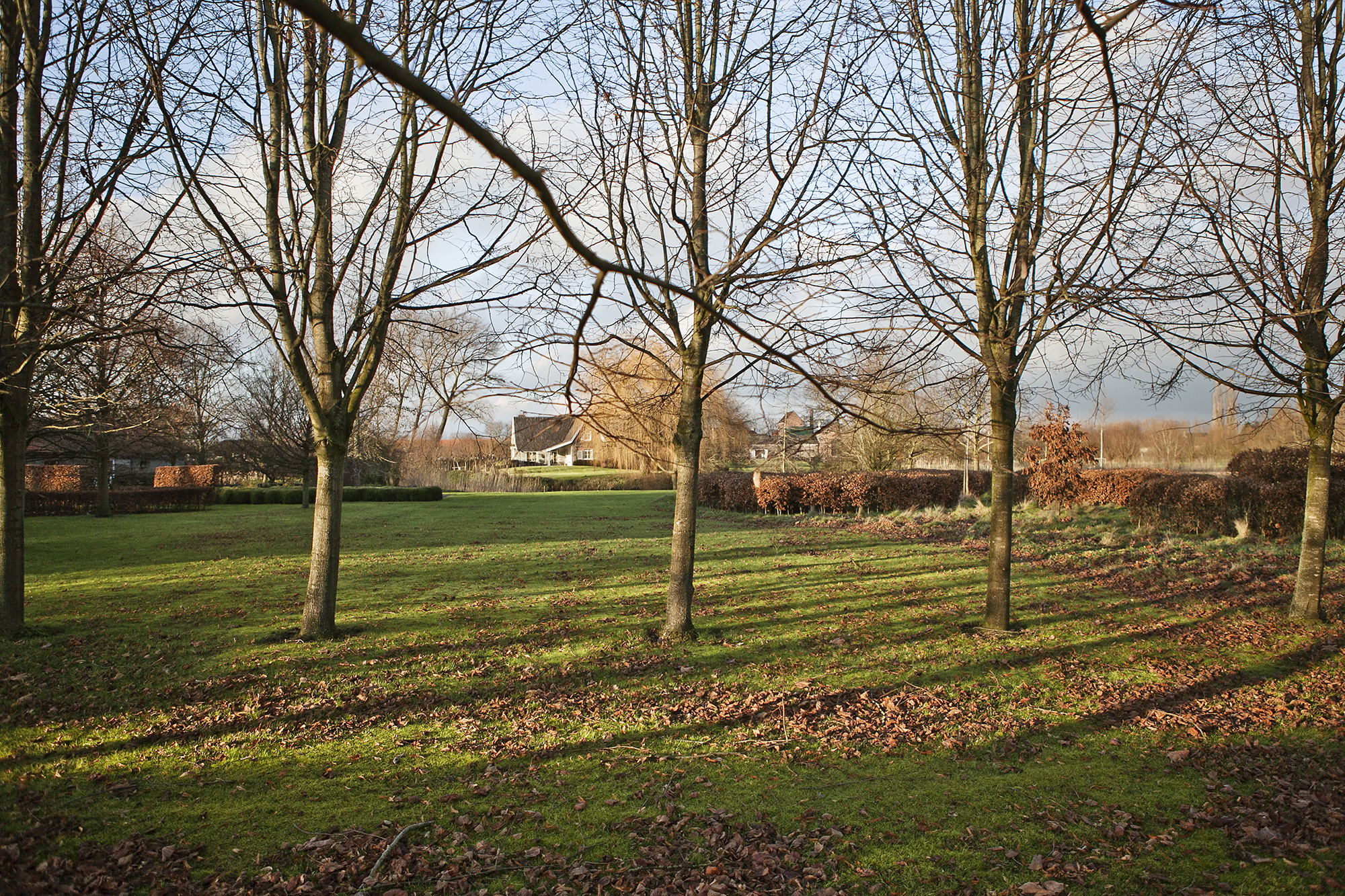
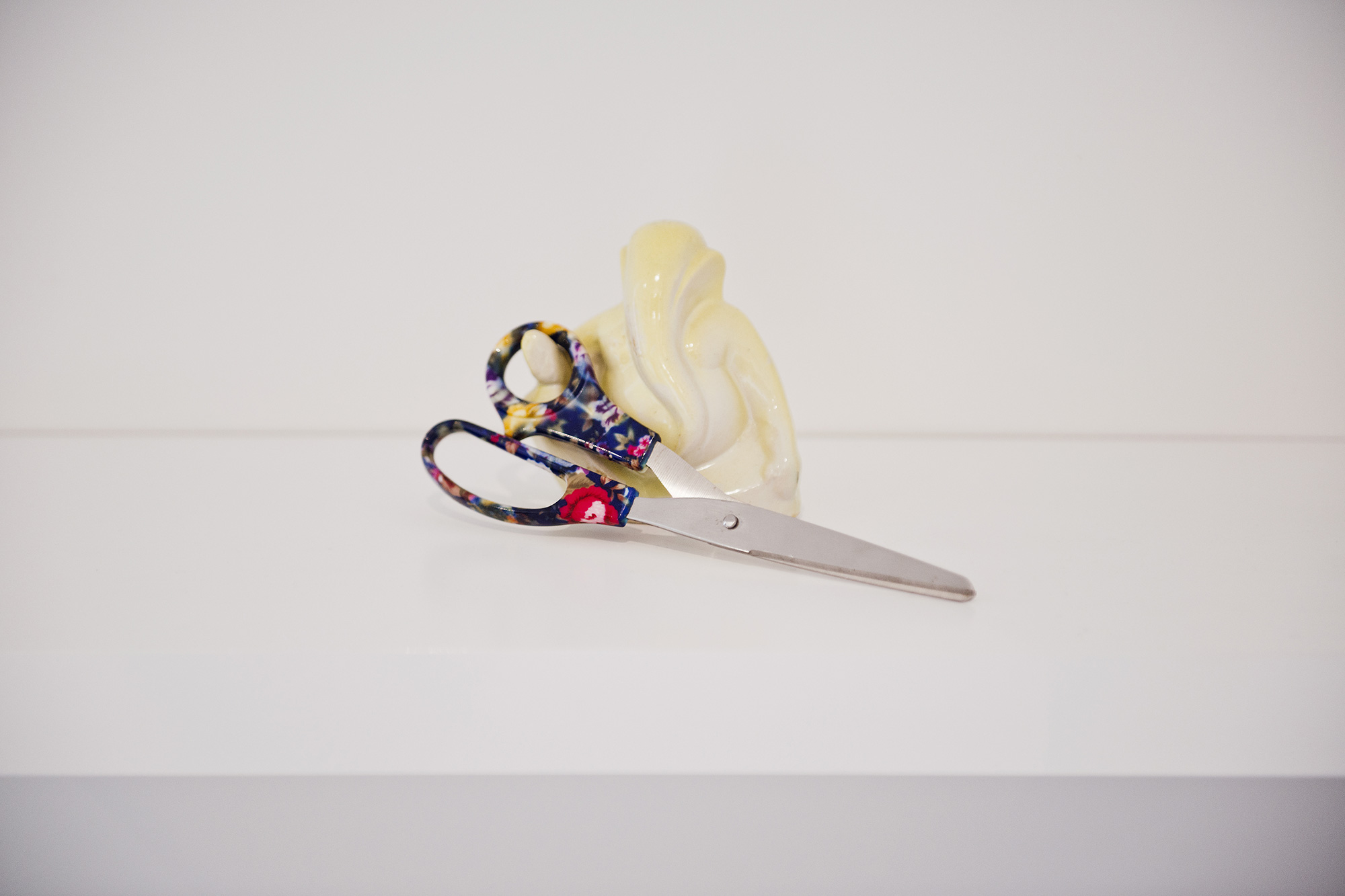
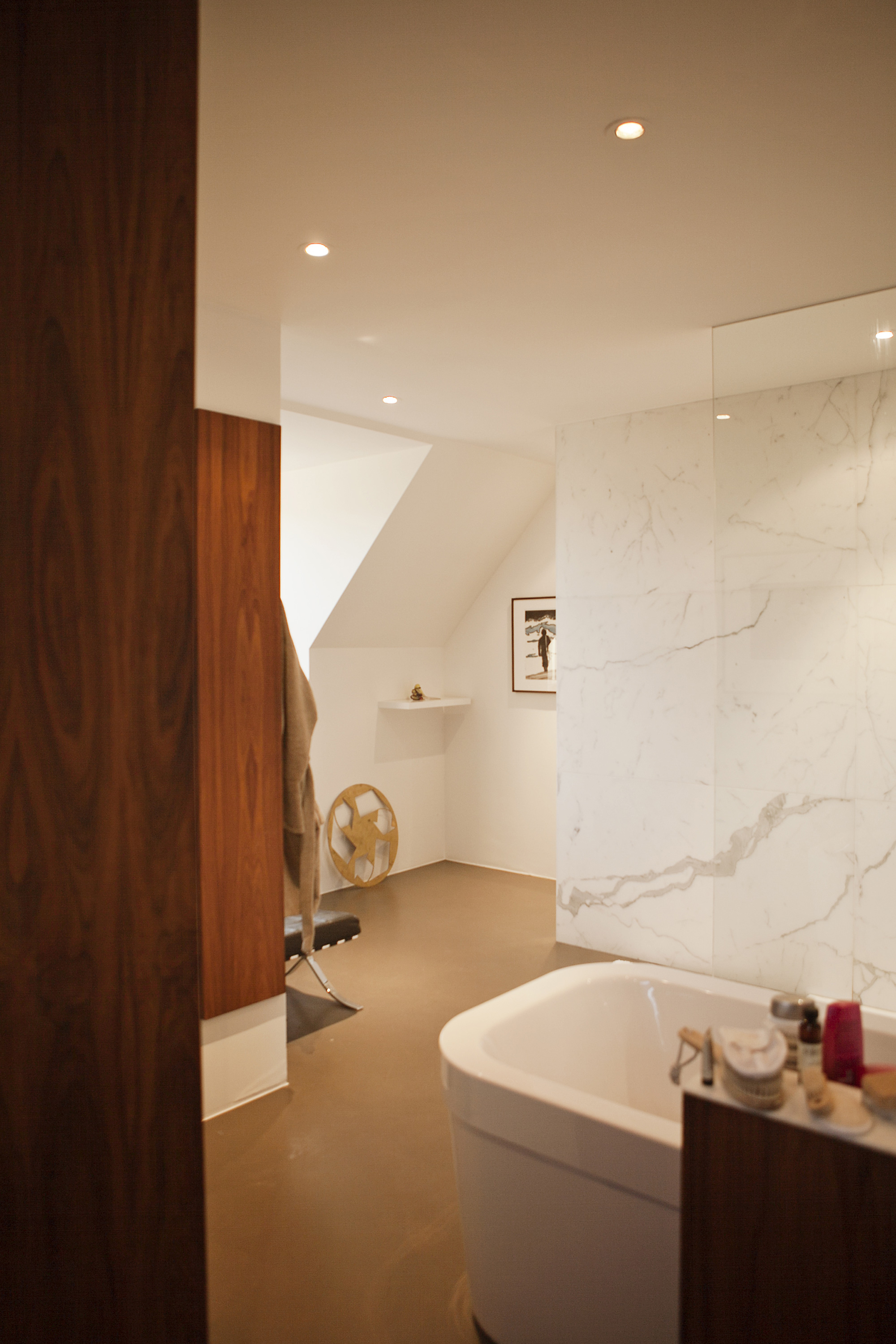
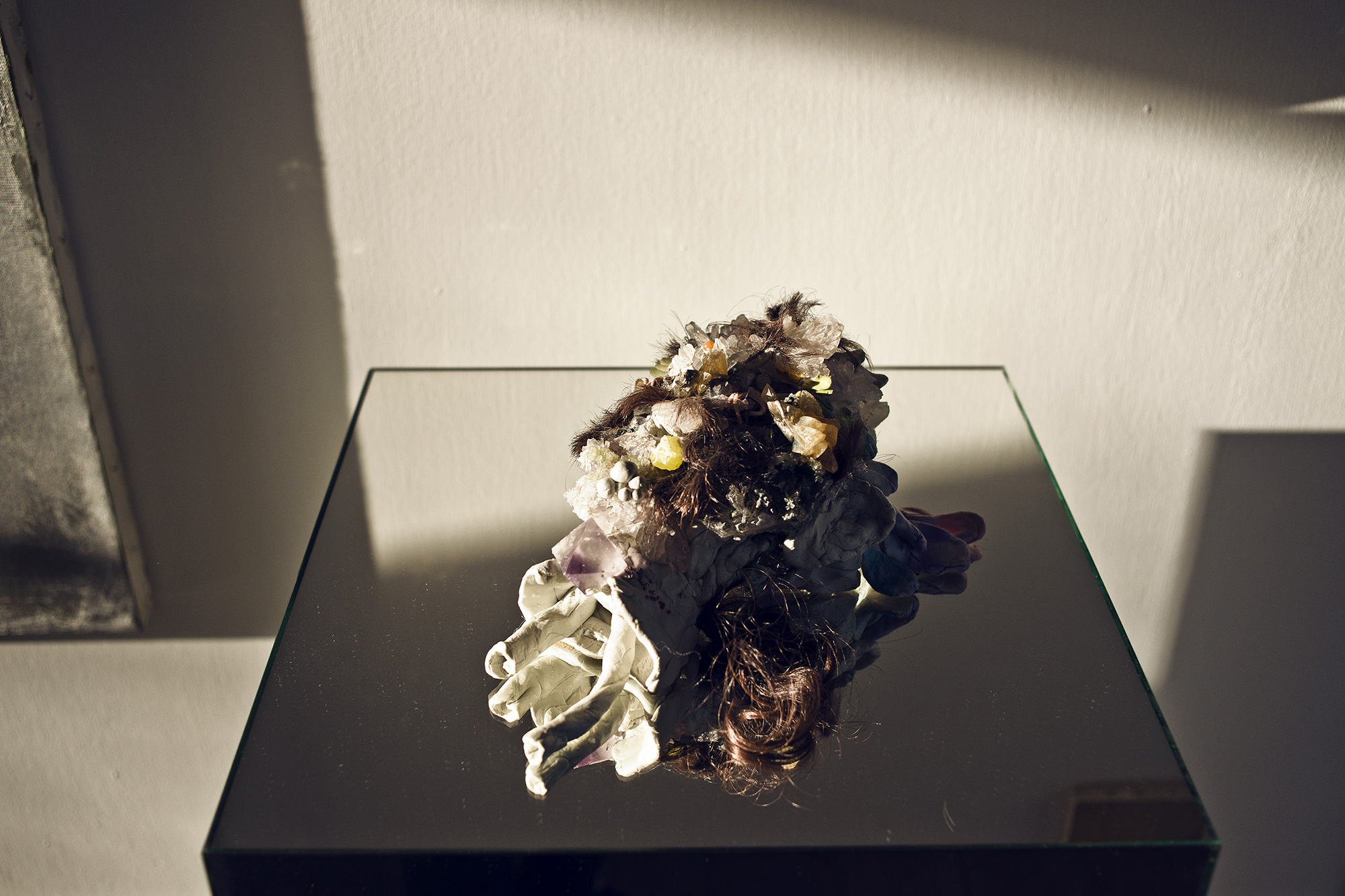
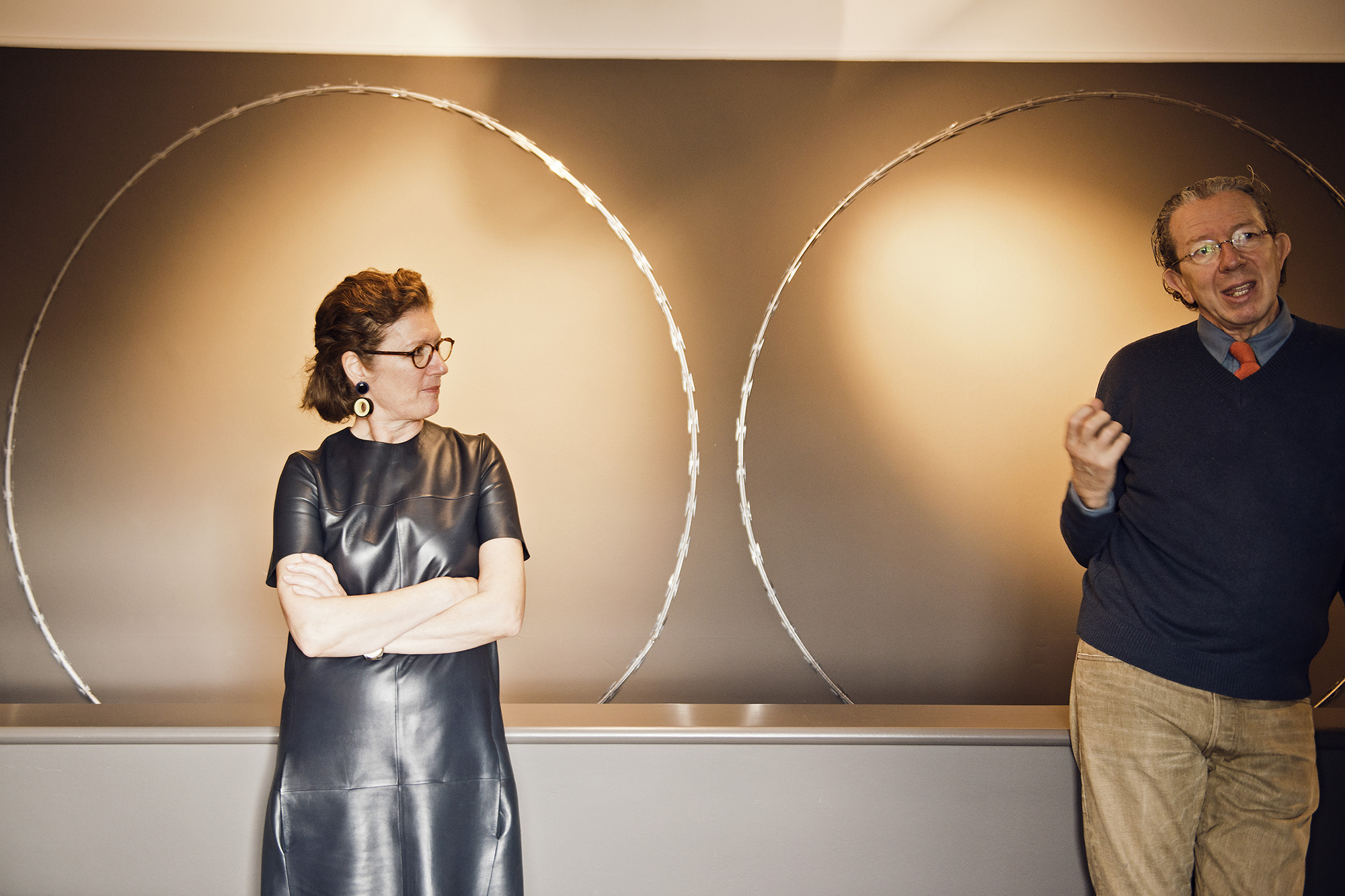
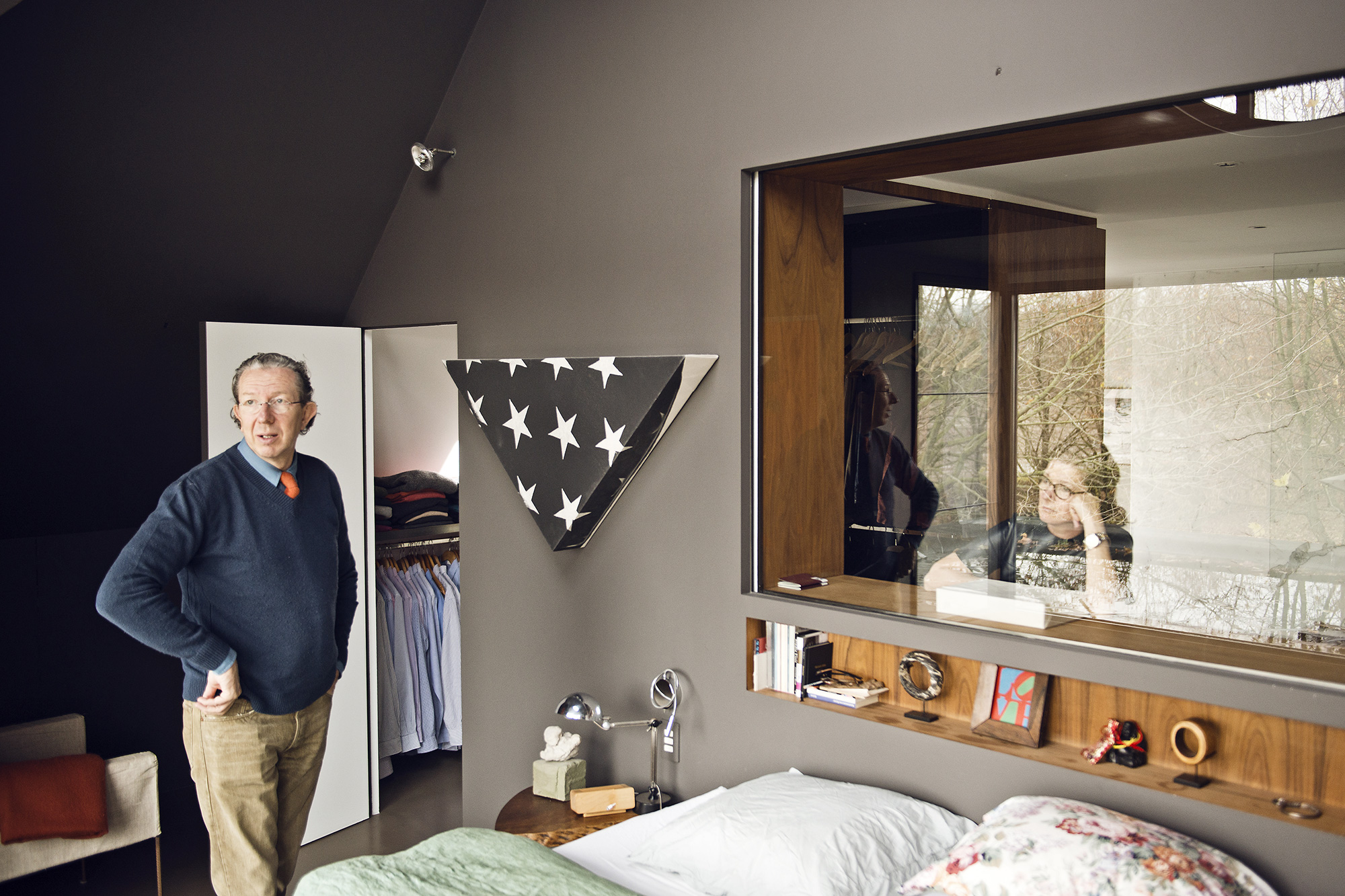
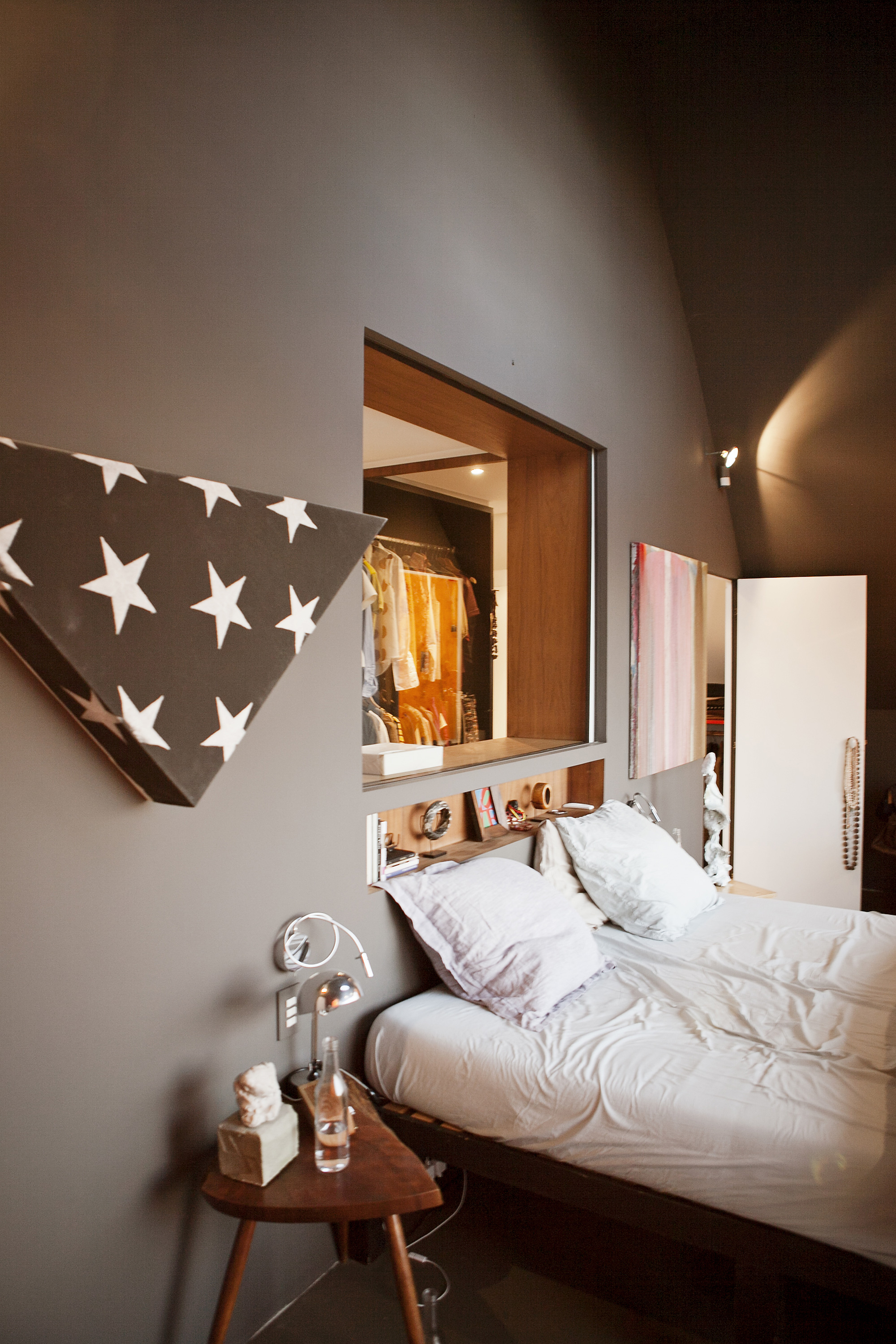

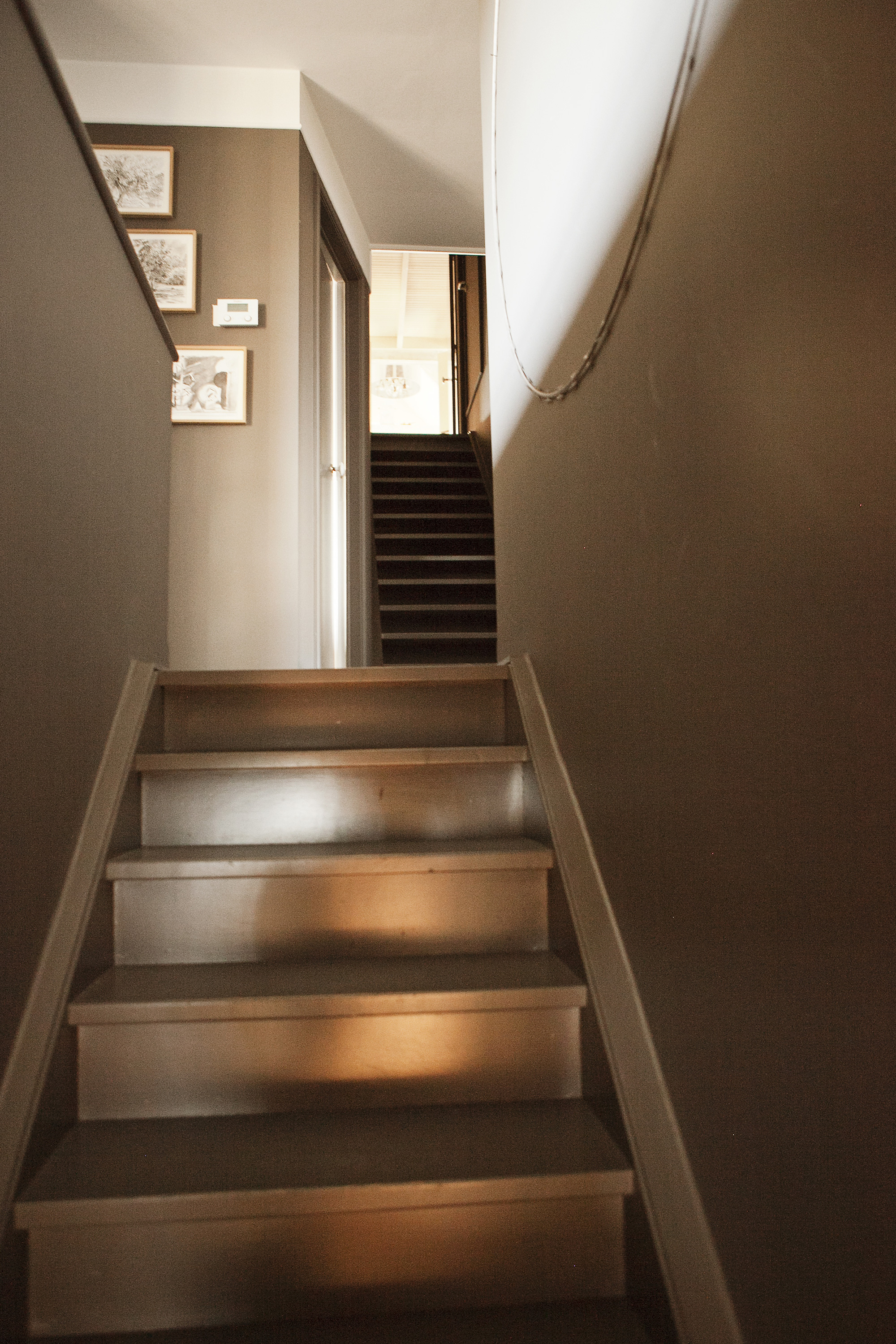
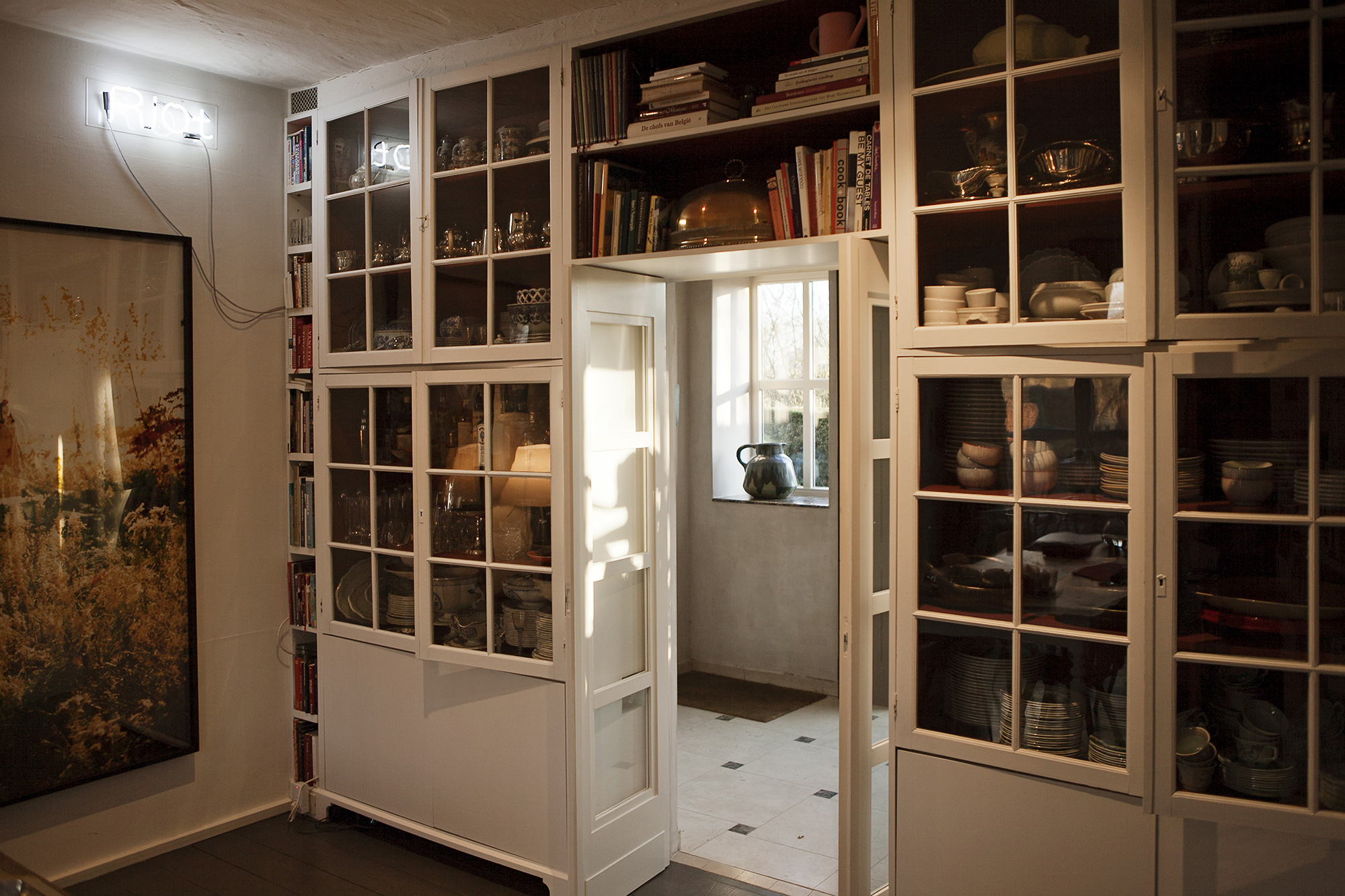
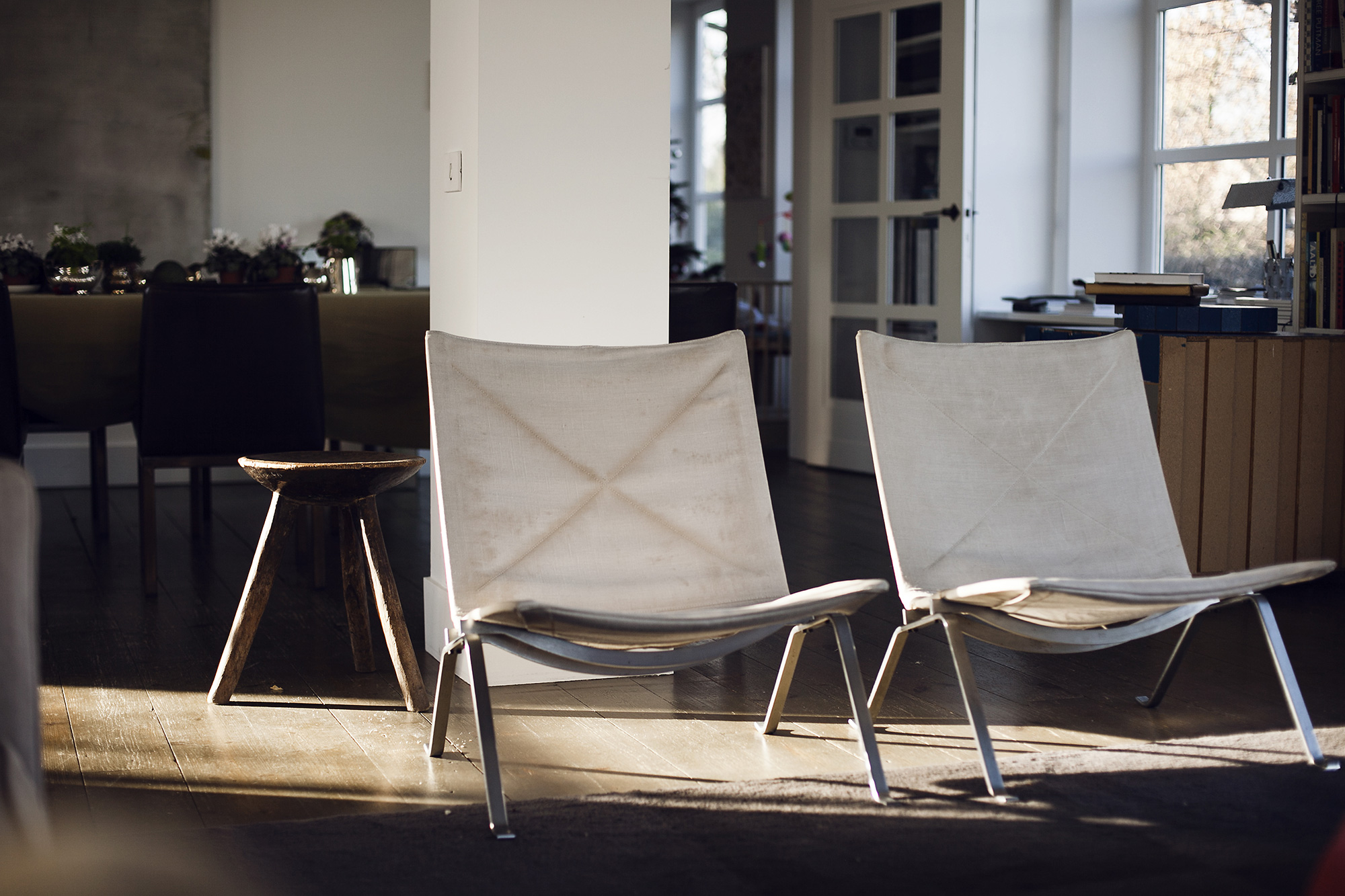
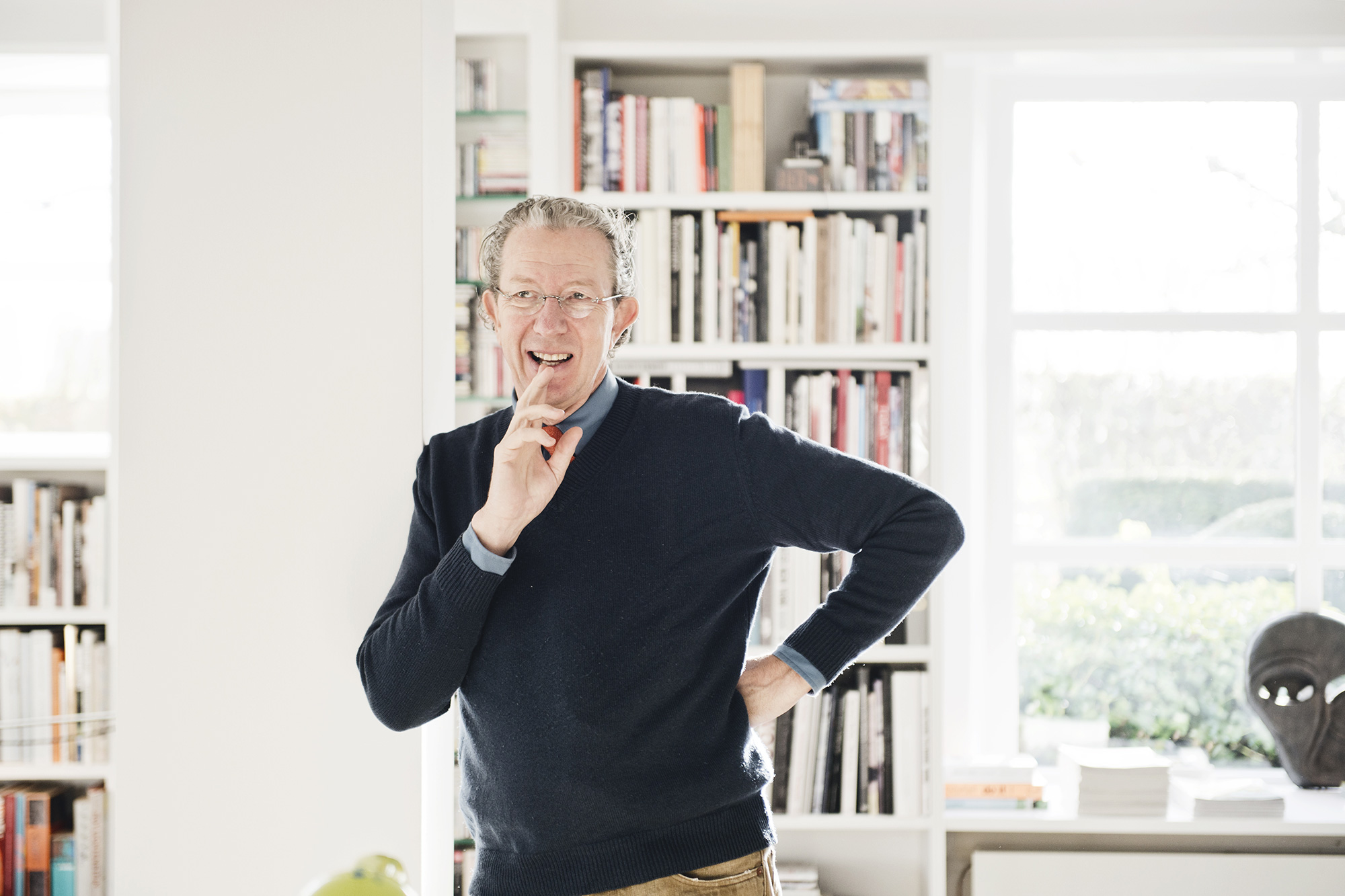
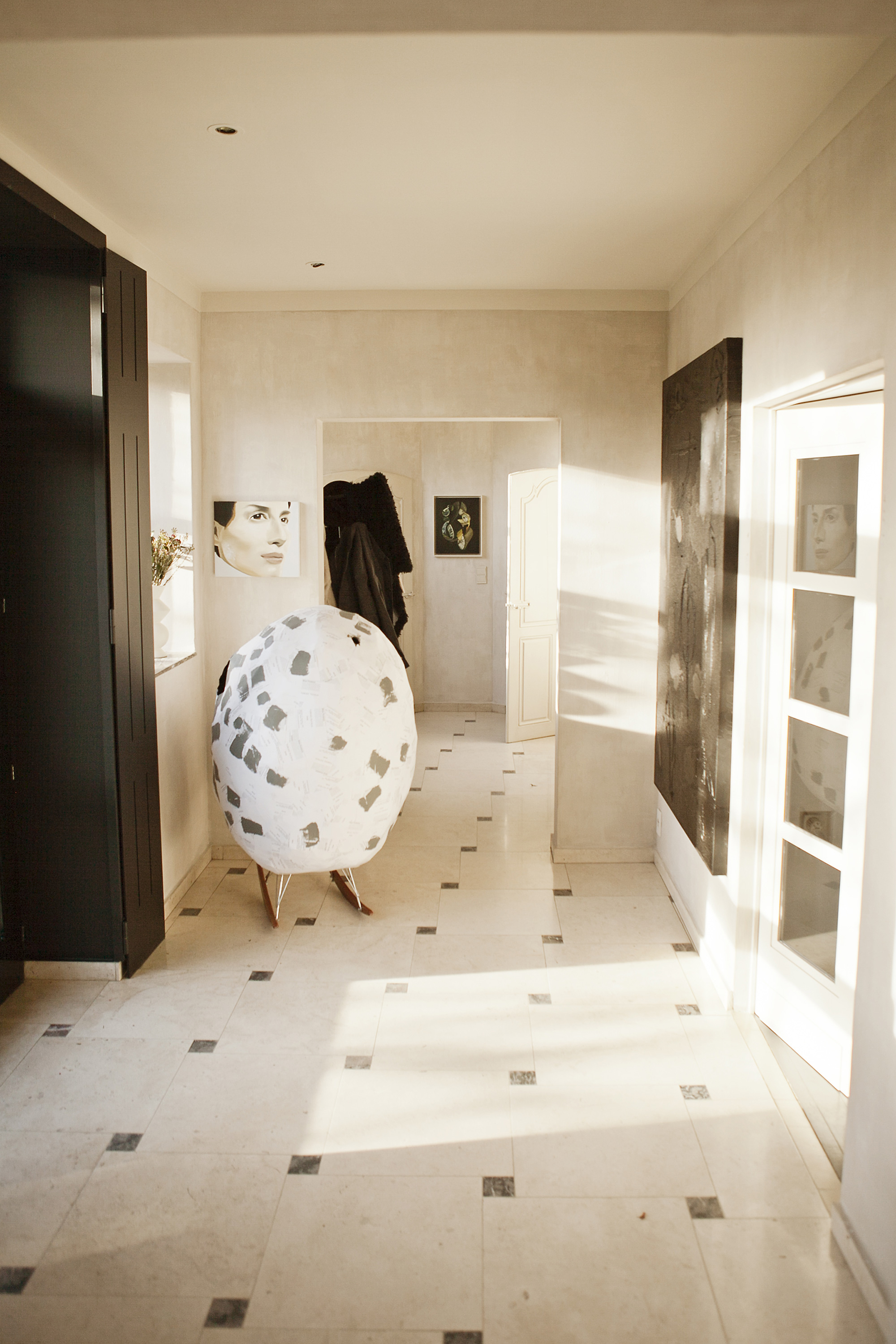
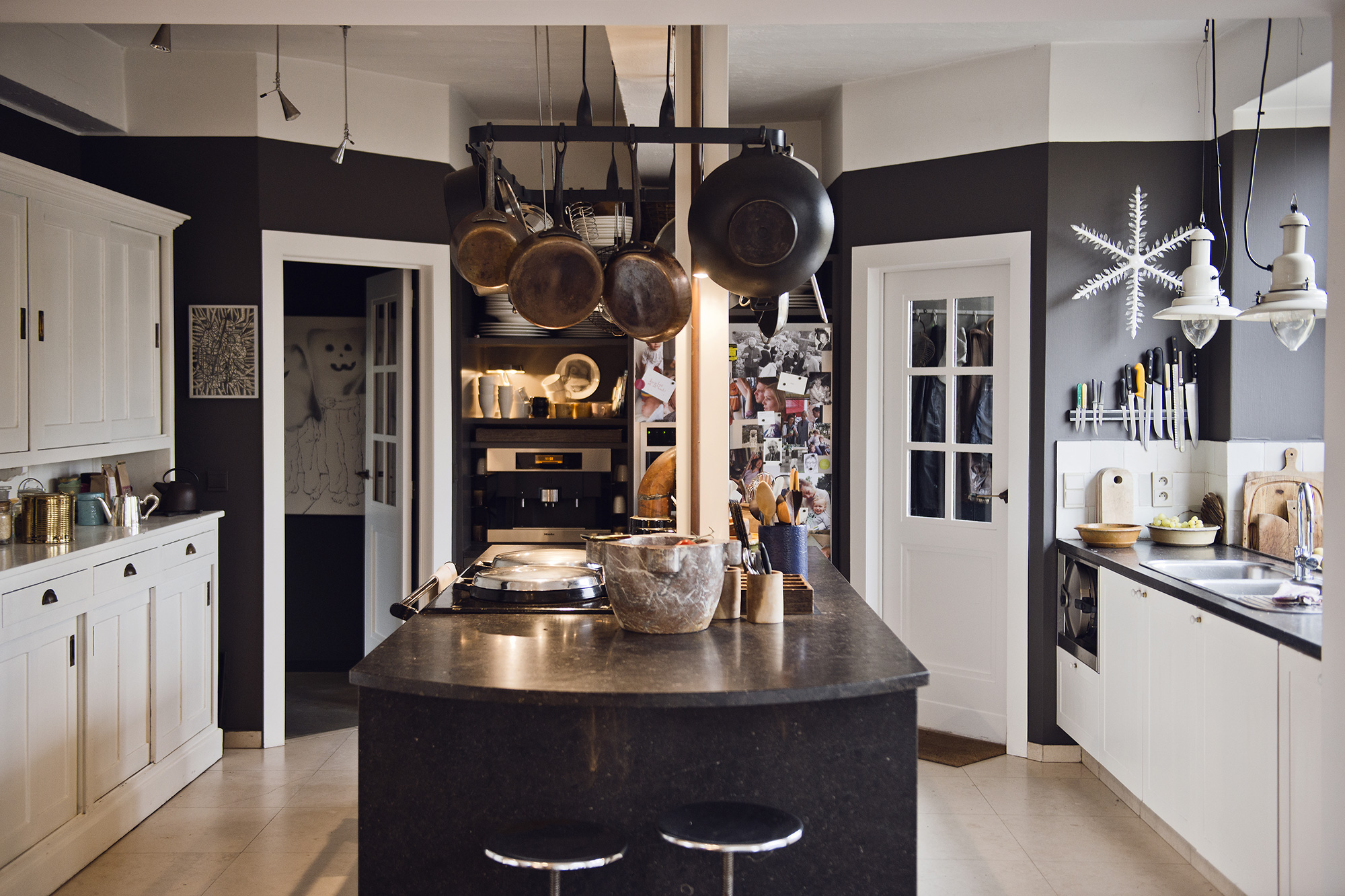
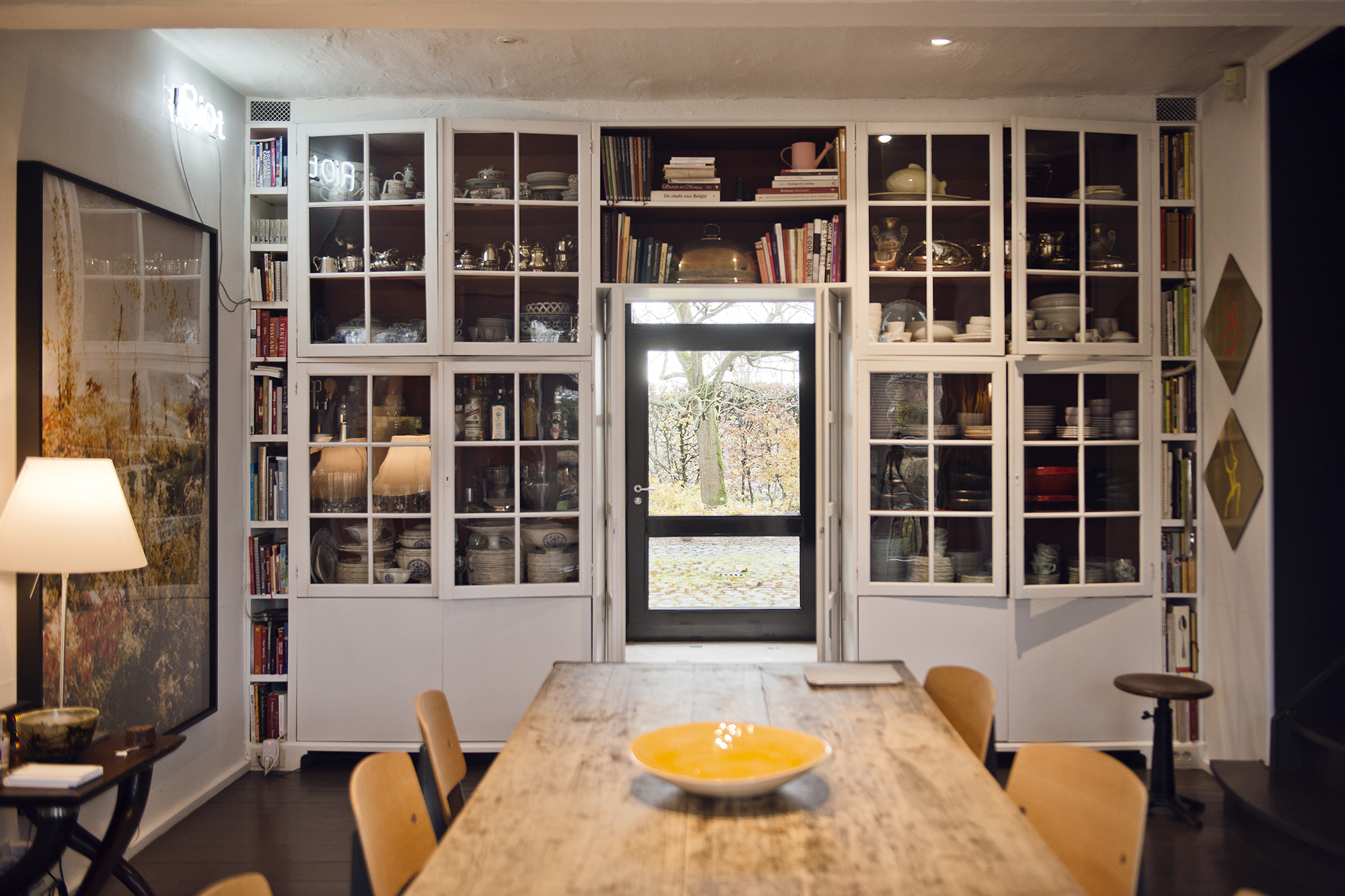
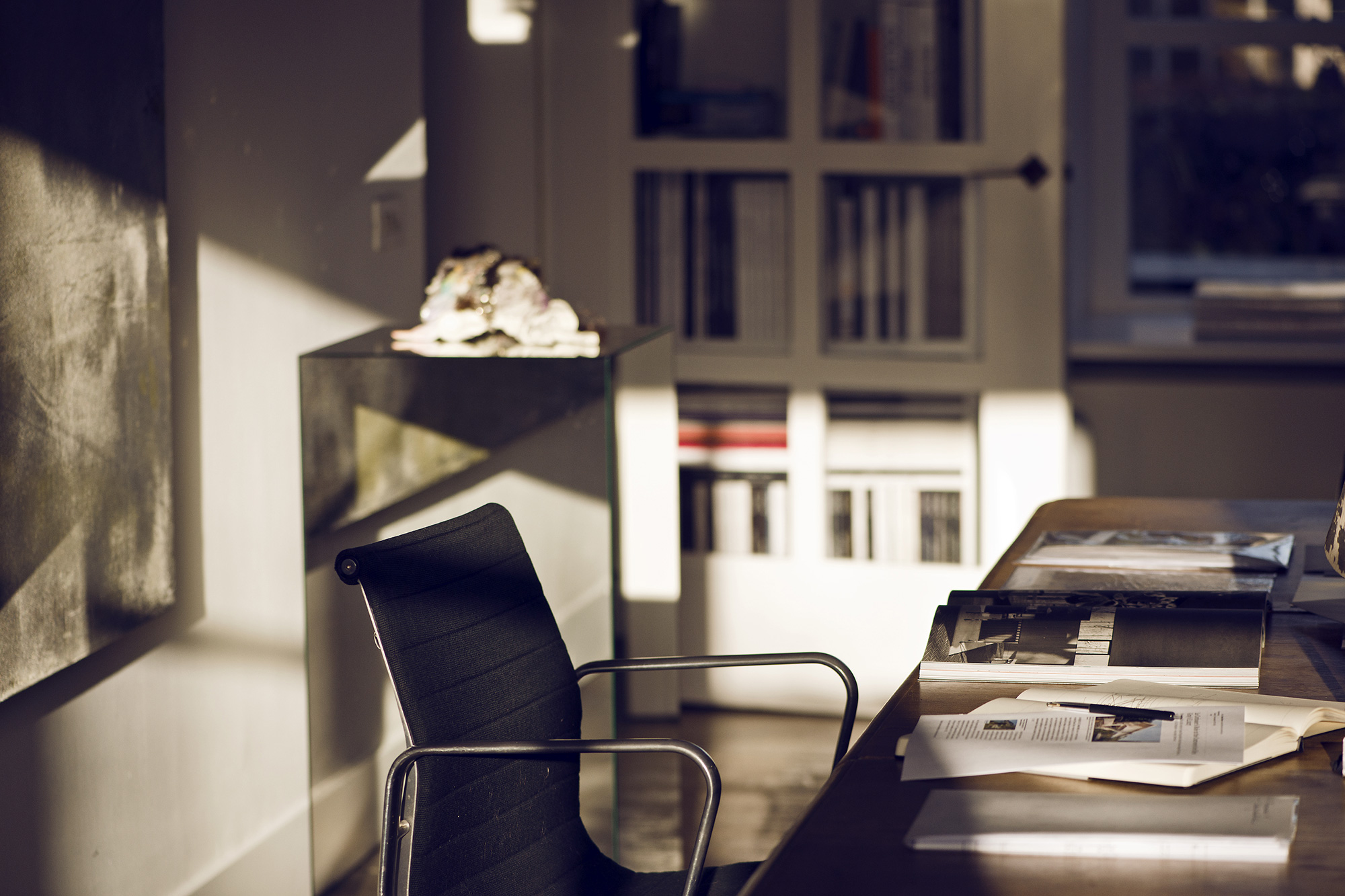
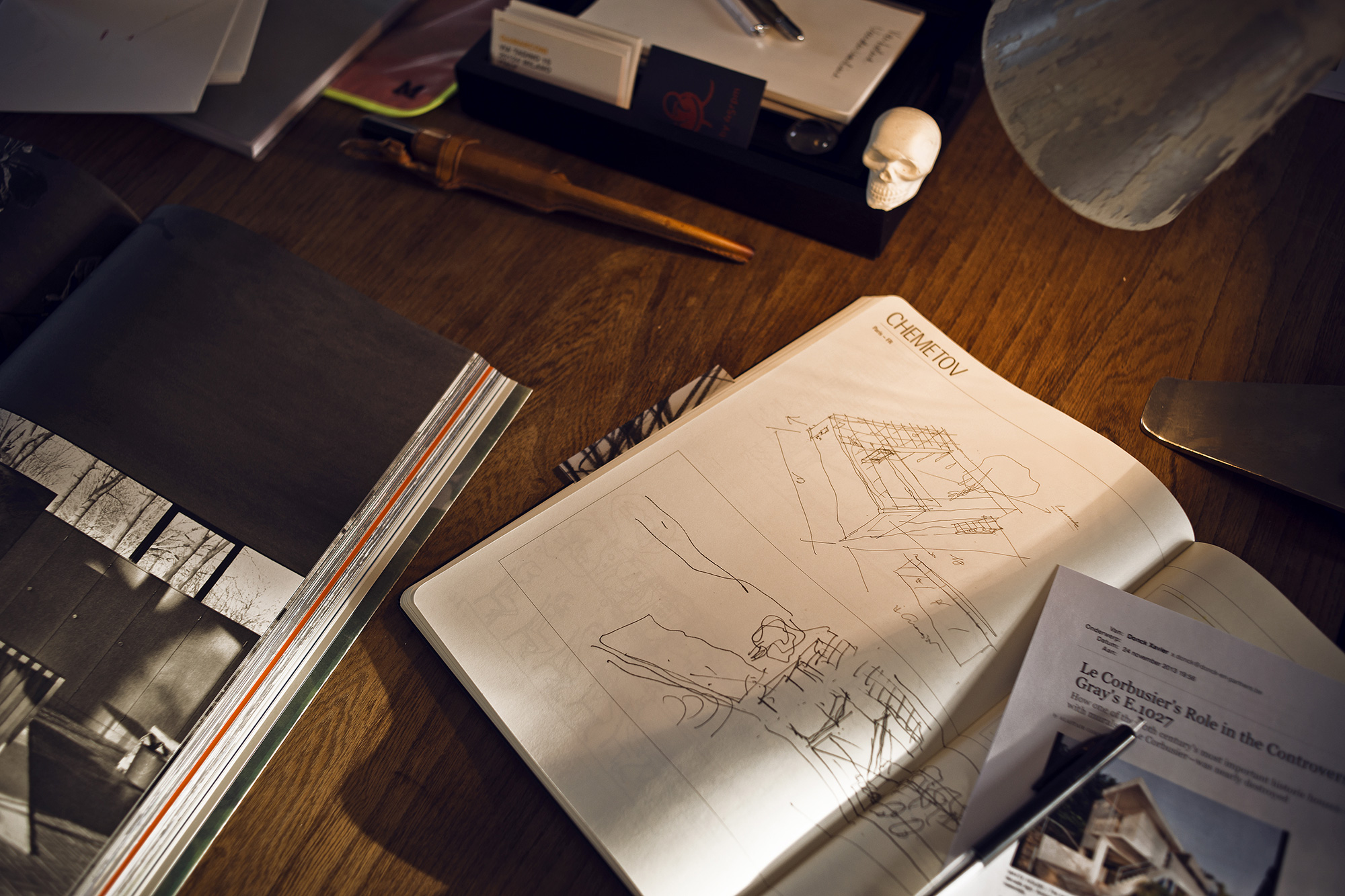
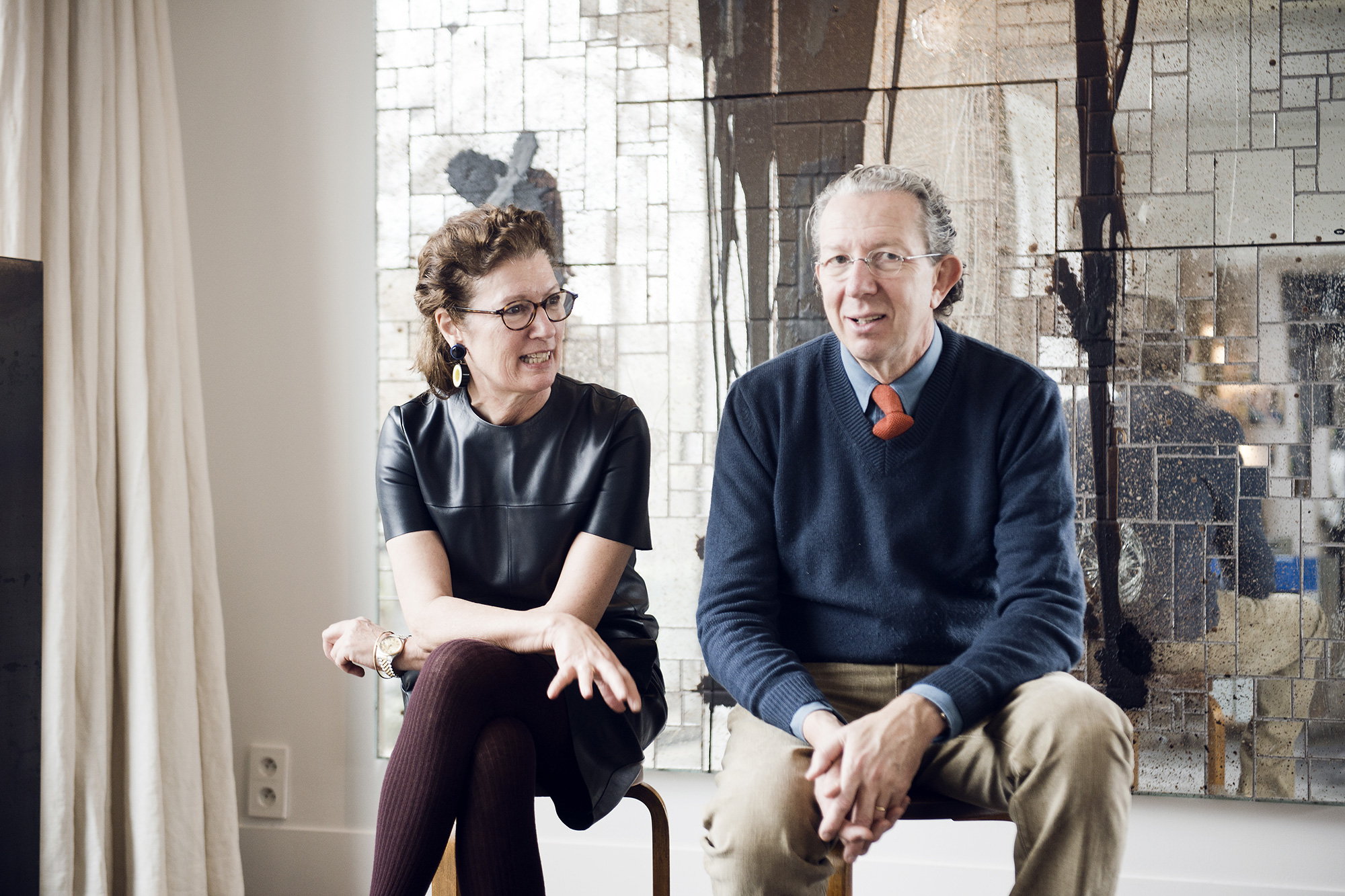
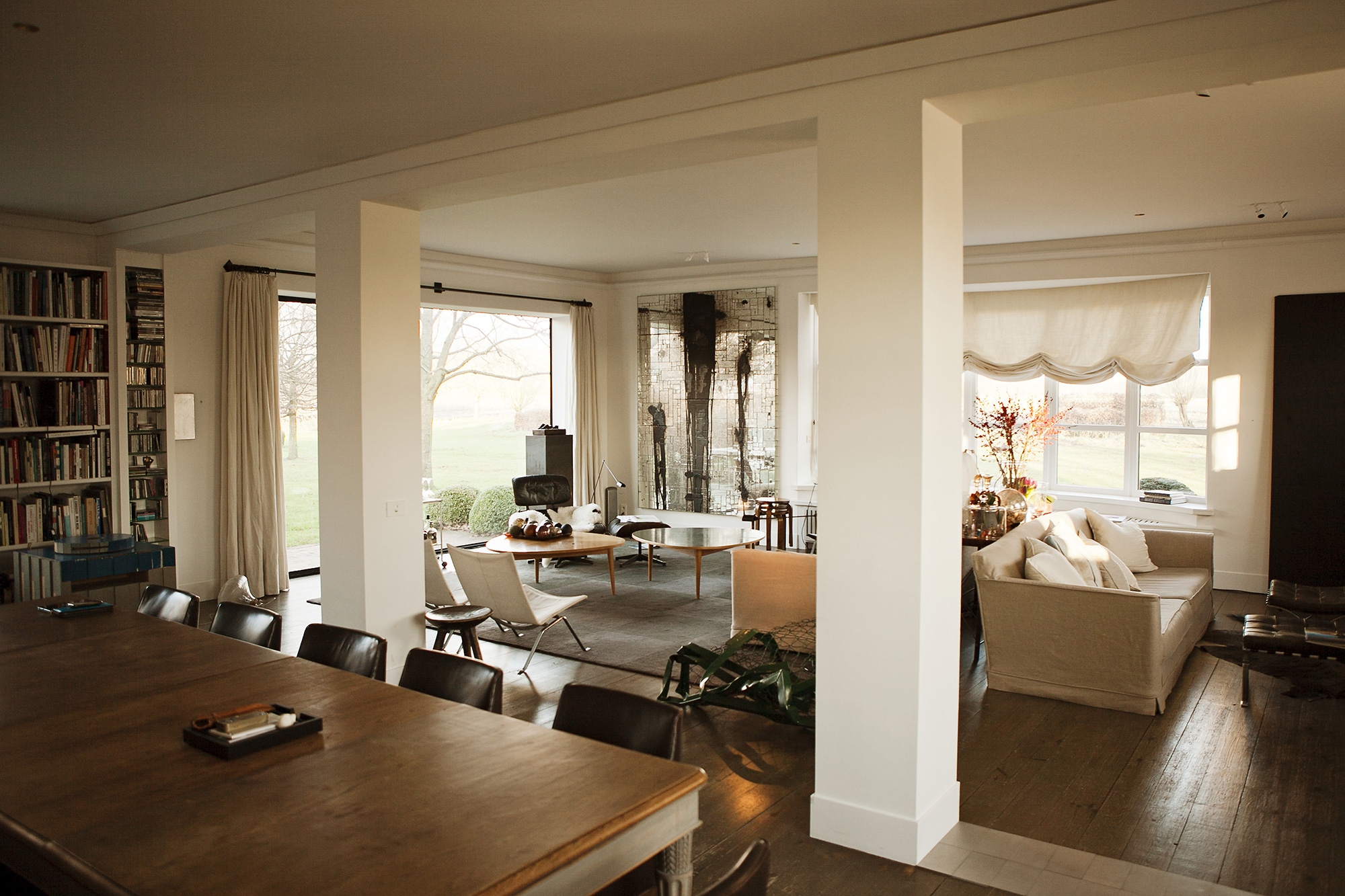
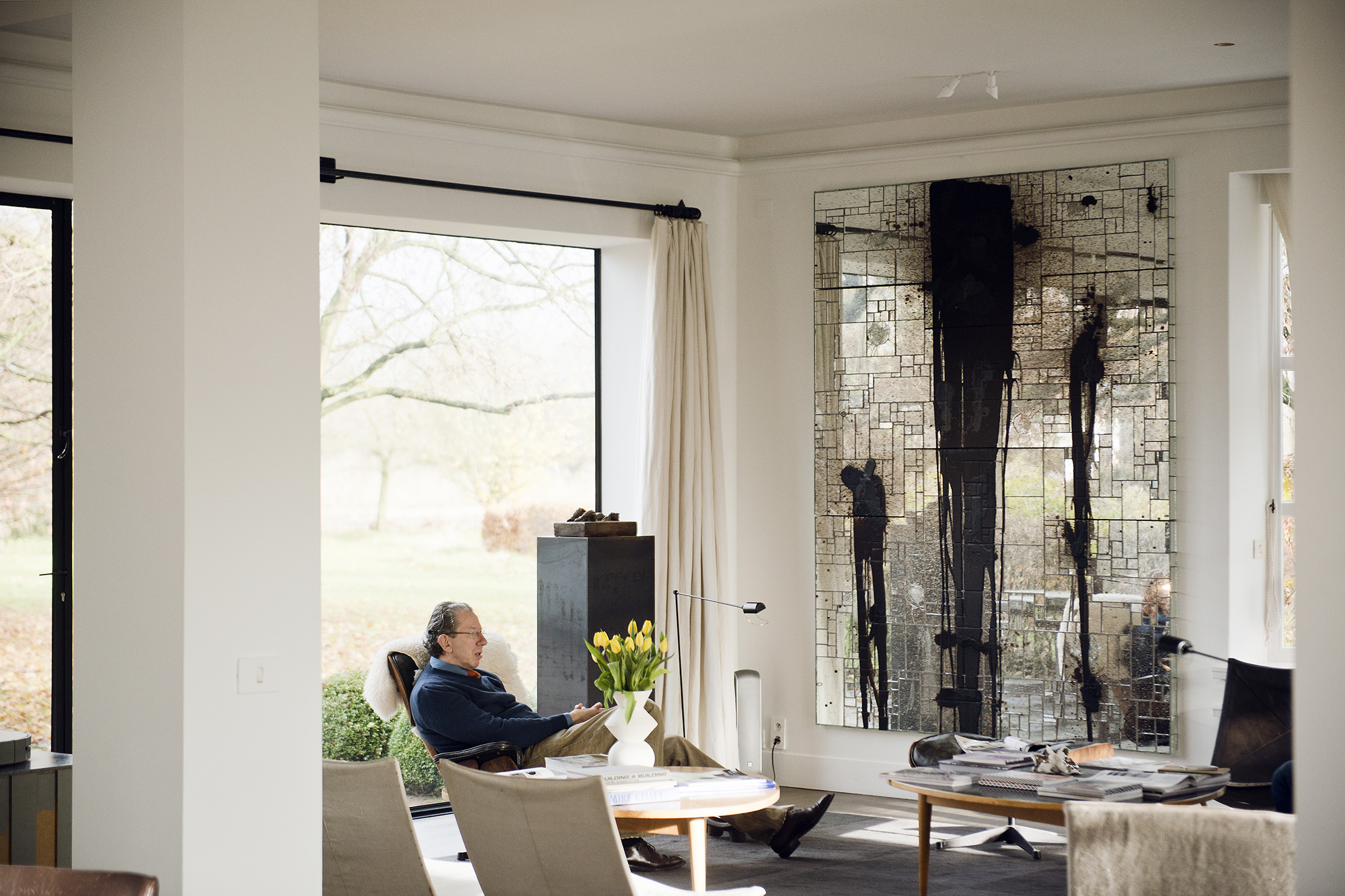
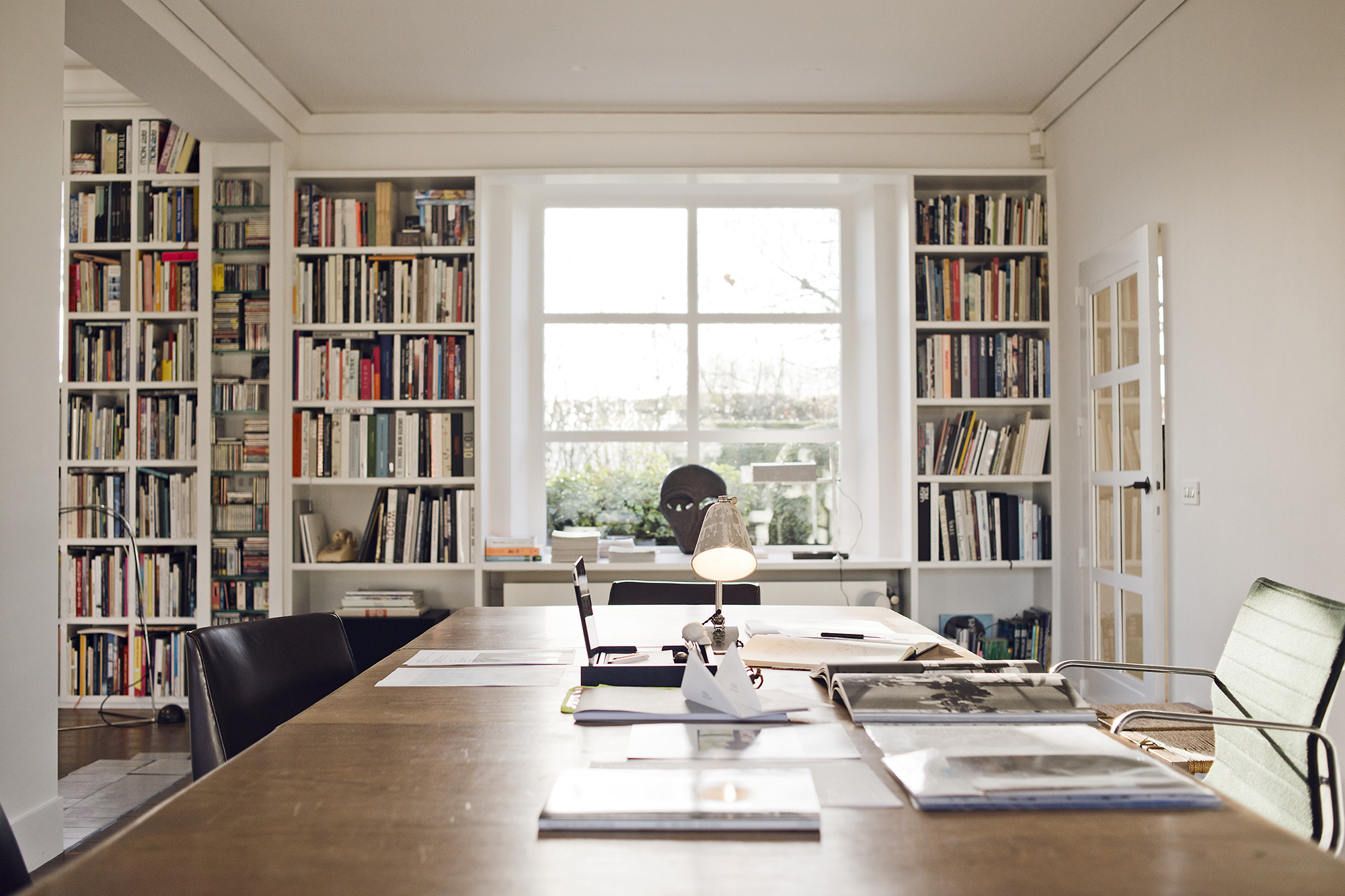
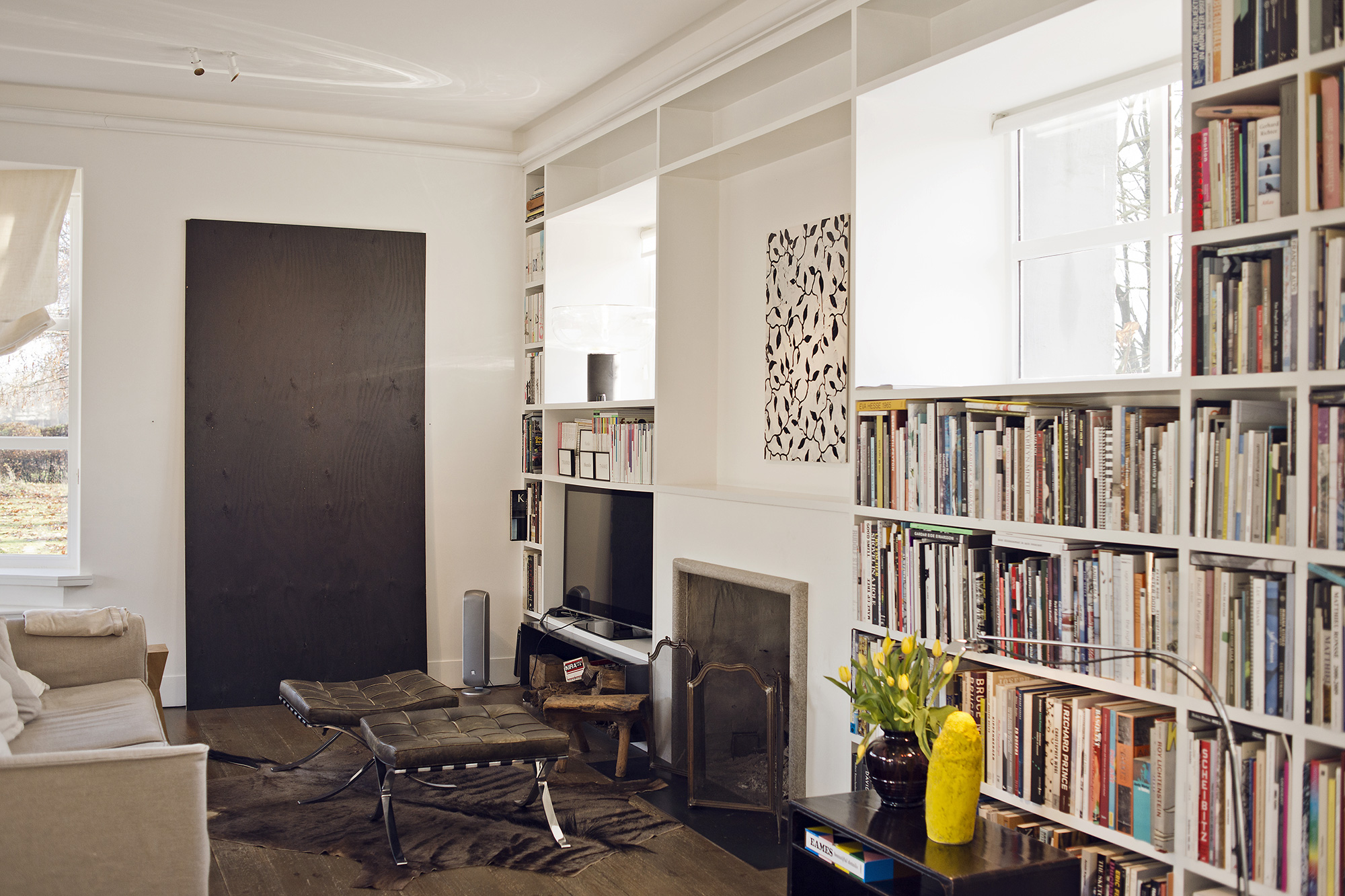
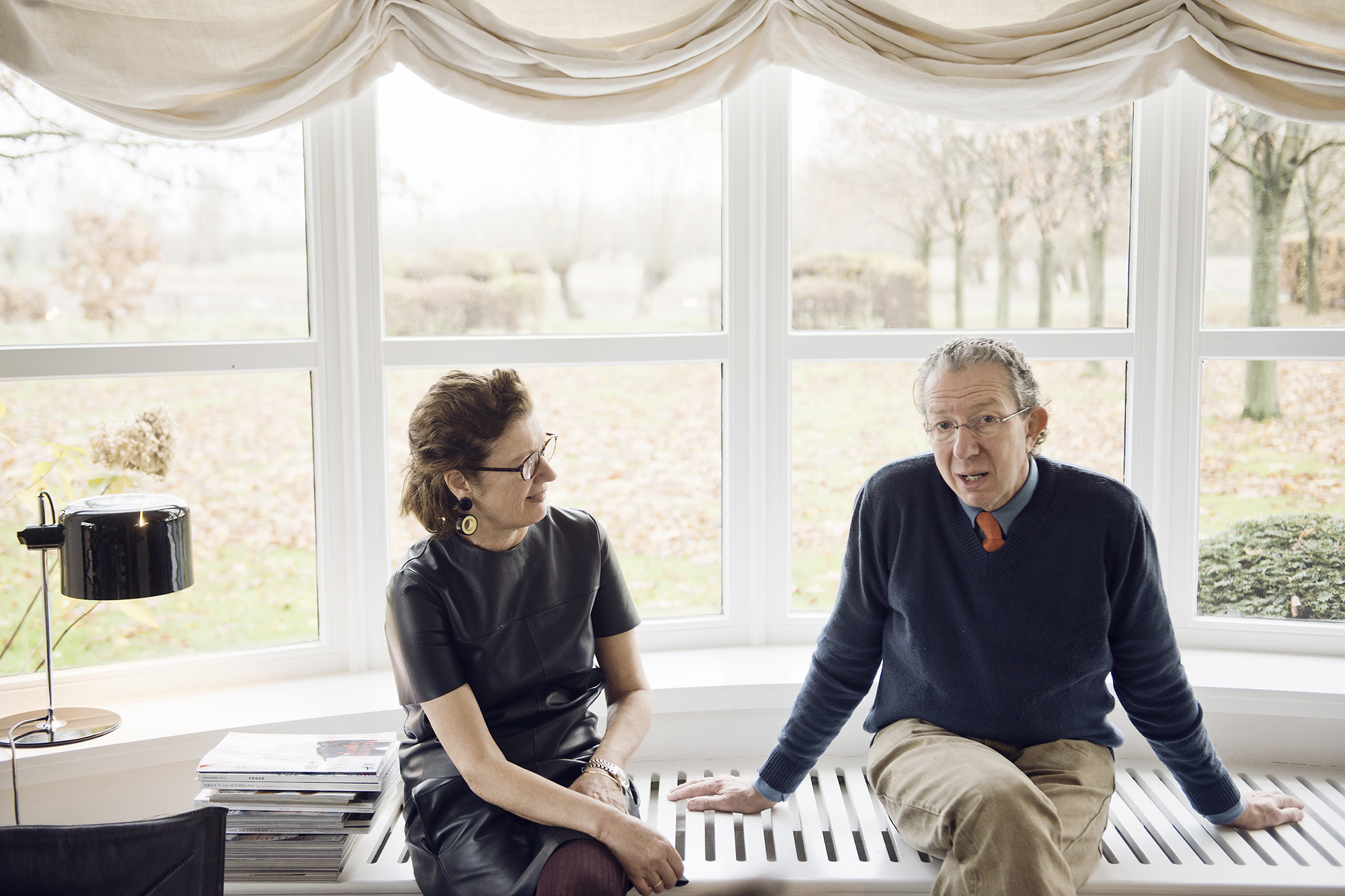
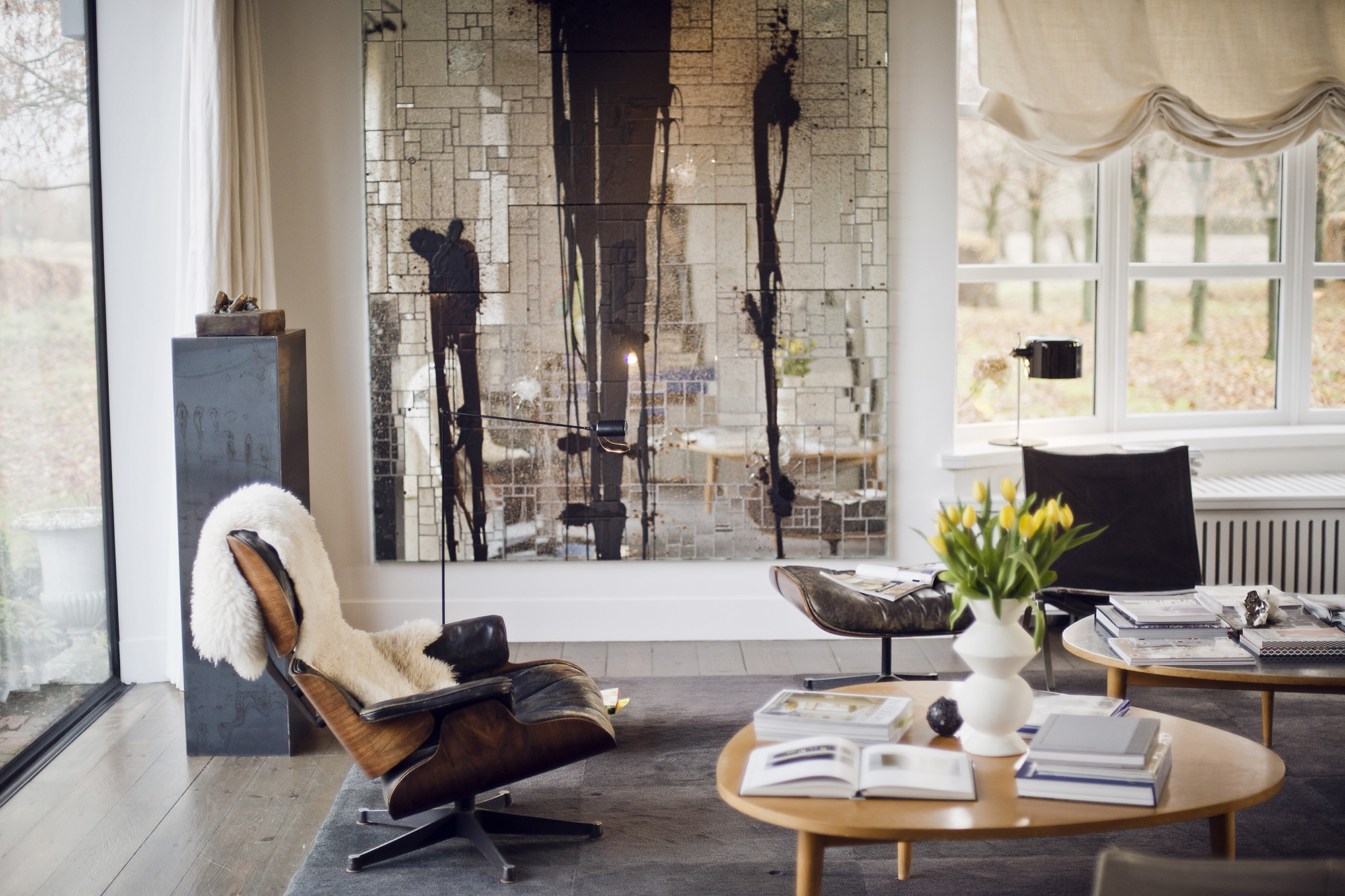
How did you get into your respective fields of architecture and interior design?
Xavier: My desire to study architecture was genetically predetermined. As far as I was concerned, there was nothing else I could do.
Karin: I have always liked to think about interiors and the organization of spaces. But initially, I followed my father’s advice and studied languages in Brussels. Then Xavier’s career took off after we had children and I ensured that everything went smoothly. It was only when I had more time that I was able to really get involved in the business and focus full time on interior design.
Do you think your social background has any influence on what you do?
Xavier: We both come from upper class families, but it didn’t really influence our attitudes. It did, however, expose us to beauty and excellent craftmanship at a young age. And it fed our ambition to do well for ourselves. When we were young, design did not have the central role it has today, the general cultural movement was not something that would reach the average Flemish person. But we had already developed a sensitivity for it. So in that sense, we were different.
Your home is a reflection of your architectural vision. How would you epitomize “home”?
Xavier: Homes are not just inanimate objects; they are places you are meant to spend your life, places to be happy with your family. Homes are objects of living: a loving family, warmth, memories of snoozing for hours in your bed, messy breakfasts, the dog trying to steal food off the table, wrapping your baby in a towel on the kitchen table. You can find all of these elements in our home as well. The children roll out of bed, run down the stairs and into the kitchen, our gathering place. Everything is open here. When we are in the living room – my favorite space – listening to an aria, the whole house is forced to listen. Of course this can create some friction between us, but that is also part of living together.
I believe that the houses I create, are created with joie de vivre. The only truly iconic part of a house should be its inhabitants. Everything else is just for effect. A house where you have to enter through a huge hallway with a gigantic staircase with perfectly smooth concrete walls that have to be kept clinically clean at all costs – ridiculous! Architecture for houses has to emanate this joie de vivre. When you enter a house it should captivate you. The space must be able to make you feel things even when it is full of ugly furniture or kitschy objects. A space that makes you forget about all this: that is good architecture
Art inhabits the world around you. Your home is full of life, when your children and grandchildren come to visit, art is part of the environment. Is that the ultimate art experience for you?
Karin: A work of art has to make you happy in your surroundings. I do not believe in having 20 drawings somewhere in a drawer to look at once a month. We change the pieces on our walls from time to time, it keeps it fun.
Xavier: True. Our meeting room is a space I really don’t like to be in. It is the only north facing room, which makes it a cold space. At first, there was a “raw” drawing on the wall, which just had the effect of making the whole experience even more somber. We decided to put Michael Rey’s Brown Horn Telepathy (Delph) (2012) and an untitled work from Brendan Lynch there because they are joyful, which has improved the quality of being in the space. Even our bathroom is somewhat of a gallery. It makes me cheerful. I need cheerfulness and I love to laugh! It’s just wonderful to let yourself go and laugh sometimes, isn’t it?
Where did your collection start?
Karin: Everything started with a “Nana” by Niki de Saint Phalle. I had known Xavier for about two months and he told me that if I ever had the money, I should buy a “Nana.” I always enjoyed art but not enough to spend money on it. I took my mother to a gallery to buy it and she, obviously quite concerned, asked, “Are you sure about this boy?” I spent my entire first month’s salary on the piece.
Xavier: When push comes to shove, art isn’t something that’s easy to afford. We’ve put ourselves in debt or bought pieces and paid for them in payments. This used to be a very common way of buying art. Nowadays you have twelve paintings and 400 potential buyers. You are forced to go to London to convince one of those gallerists in person that you are willing to buy a piece of art. I don’t want to put in that kind of effort, it’s just not worth it.
We only really started collecting art after Jan Hoet’s project “Chambres d’Amis” in 1986. We were completely overcome by what we saw. We were introduced to Bruce Nauman in a random townhouse in Ghent and there we saw no less than six of his pieces! It was a fascinating moment – the start of our artistic journey. When you collect art the journey you embark on is quite an amazing one. Karin and I get engulfed in that intellectually enriching journey. When you collect art you select art pieces by trusting your gut but you also learn to rely on your brain: after all, it is still an investment. I don’t dare buy anything if I am unsure of its profitability. People who say that money doesn’t count, well, they’re lying. Sometimes an artist’s works can disappoint, perhaps the works are not culturally consistent or we see that their work is not progressing. In this instance we sell the work and invest in something new.
Karin: Art should produce more art: it has to evolve.
You are dedicated art collectors, are there ever any differences of opinion?
Karin: Aesthetically we trust each other completely but one difference is that I am not very interested in getting to know the artist. However, Xavier is, and he will look for the man or woman behind the work and want to know about their background, studies, political views, religion and so on. Artists can be egomaniacs and I think this sometimes takes away from their work. Actually, we do have a different opinion about the work in our hallway Endless Eames (2003) by Tobias Putrih. The artist built an egg on top of an Eames rocking chair and linked that movement to the motion of the sea. Inside of the piece images of the sea ripple when the light falls on the egg. It’s too complicated for me. I need to understand a work from the moment I see it.
Is there a particular contemporary artist you are interested in at the moment?
Xavier: Sterling Ruby. We have a few of his works in our office and bedroom. The most fantastic works are his spray paintings.
How does your design process work?
Xavier: I design mostly in my head. The paper sketch only comes at a much later phase. Designing is an exercise of the imagination. You imagine living in those houses, walking around in them, sleeping there. I was once asked how I had come up with the design of a bathtub and I replied that I had woken up in that bathtub – all in my mind of course! The day the project is finished I hand over the key and I ring the doorbell. This can be a frustrating sensation, because the house really is my brainchild. Luckily, most people have been kind enough to let me have a peek. For me every design I create is an exercise for the particular assignment I am working on rather than an exercise for what I want to produce as an absolute object. My thought process is quite complex and expanded and it gives me a lot of inspiration. This means that a client only has to give me a limited number of hints for me to come up with something suitable.
I’m waiting for the day when a client comes and tells me, “Look, we are a couple, we have children or we want children, we have parents and we need a table that can fit twelve people on a Sunday afternoon, we want a comfortable sleeping space for our dog, we just want simple things.” This table here, for example, is the table my grandfather used to eat breakfast at and that cupboard used to belong to my grandmother. When my nephew comes by for a visit, he touches that cupboard, his grandmother’s cupboard. That’s what this is about.
Karin: My process is very subconscious. As soon as I get an assignment, it sticks to me. I keep a floor plan of the space with me and then I start searching for inspiration by looking at available materials, different fabrics and catalogs. My inspiration mostly comes from something unexpected, like an image I stumble across in an interior design magazine or color combinations in advertising. After a while, the pieces of the puzzle just come together.
My work focuses on interpreting a client’s tastes, ambitions and dreams by coming up with a result that embodies all of these things.
Would you ever want to design anything else besides houses?
Xavier: Yes, I would like to design a church, not because I am religious, but because I am not religious. Le Corbusier wasn’t religious but when you enter the Ronchamp Chapel you are almost overcome with a desire for religious sentiment. Carlo Scarpa built the Brion Cemetery in Treviso near Venice. The whole place is mystical. The architecture has been so intelligently developed that it almost becomes explosive, it makes your brain work differently. That overpowering sense of security is something you should also have when entering houses. Emotions are something you need to experience before you can do something useful with them as an architect.
What does the future hold?
Karin: As far as art is concerned there will be a purification. Now, it’s all about hype and there are a lot of artists around. They won’t all remain established artists.
Xavier: As far as architecture is concerned, I would still like to build something very small. Like Le Corbusier did with his Cabanon de Vacances. I would like to build a house that refers to the scarcity of the 1950s. I am a child of the 50s and still admire the post-war urge to improve the world through simple technology. Tomorrow is ahead of us we don’t know what it has in store and we will keep it that way. We don’t want to know.
Xavier & Karin thank you so much for sharing your thoughts on building a home and showing us your impressive art collection. To find out more about Xavier’s architectural practice, visit his website here.
Photography: Geraldine van Wessem
Interview and Text: Lynn Westerlinck
Translation: Tim van den Oudenhoven
